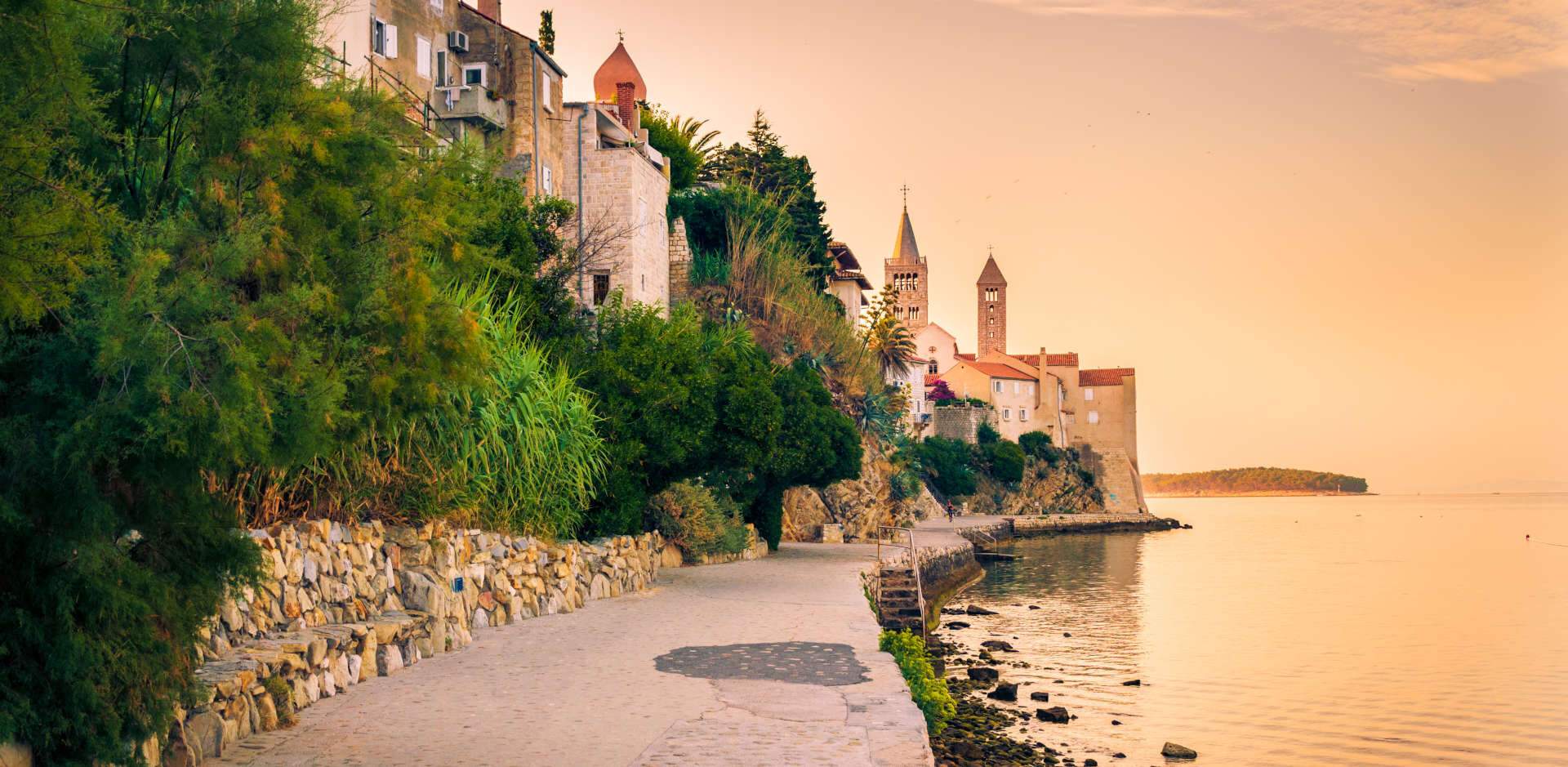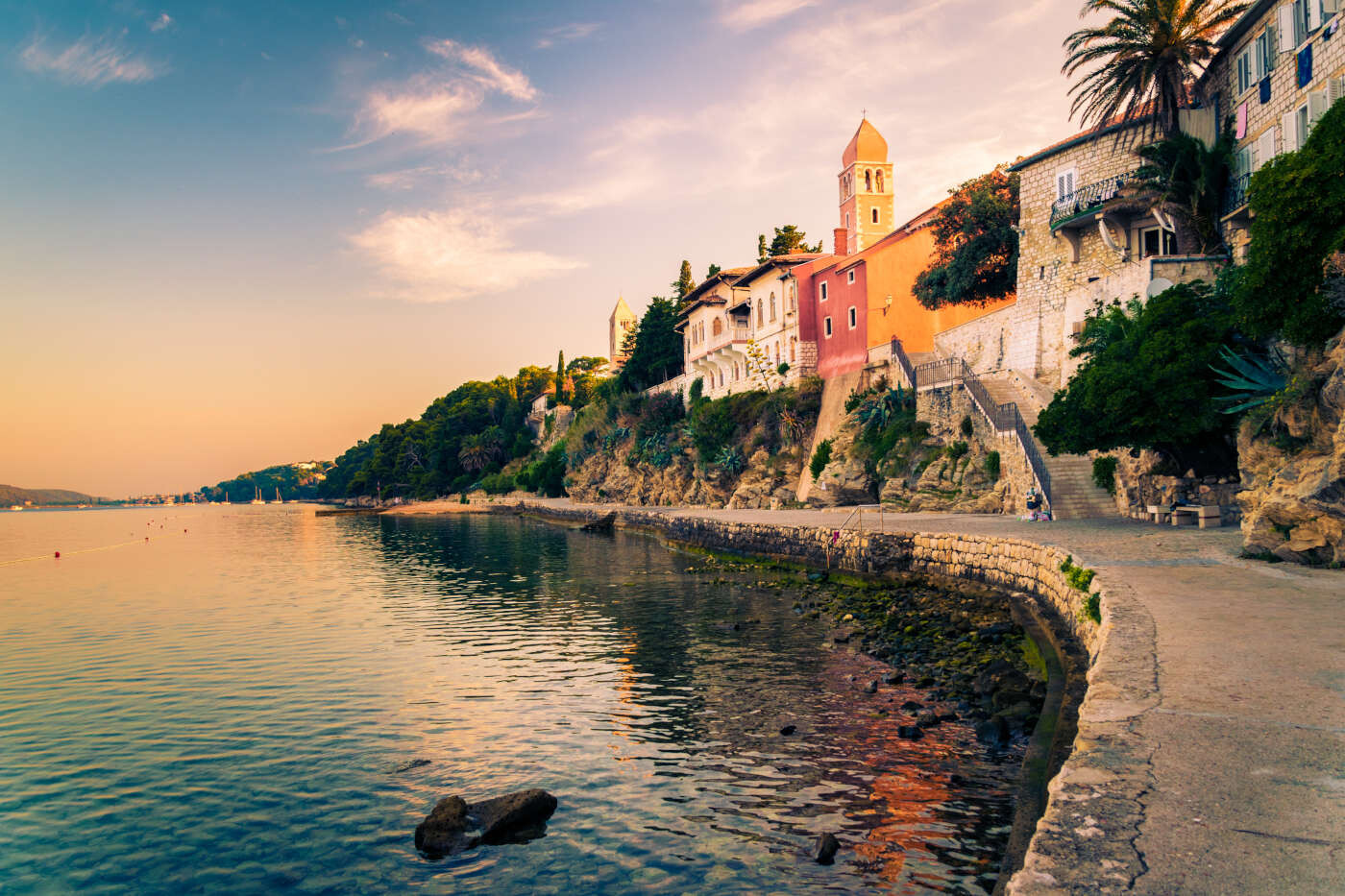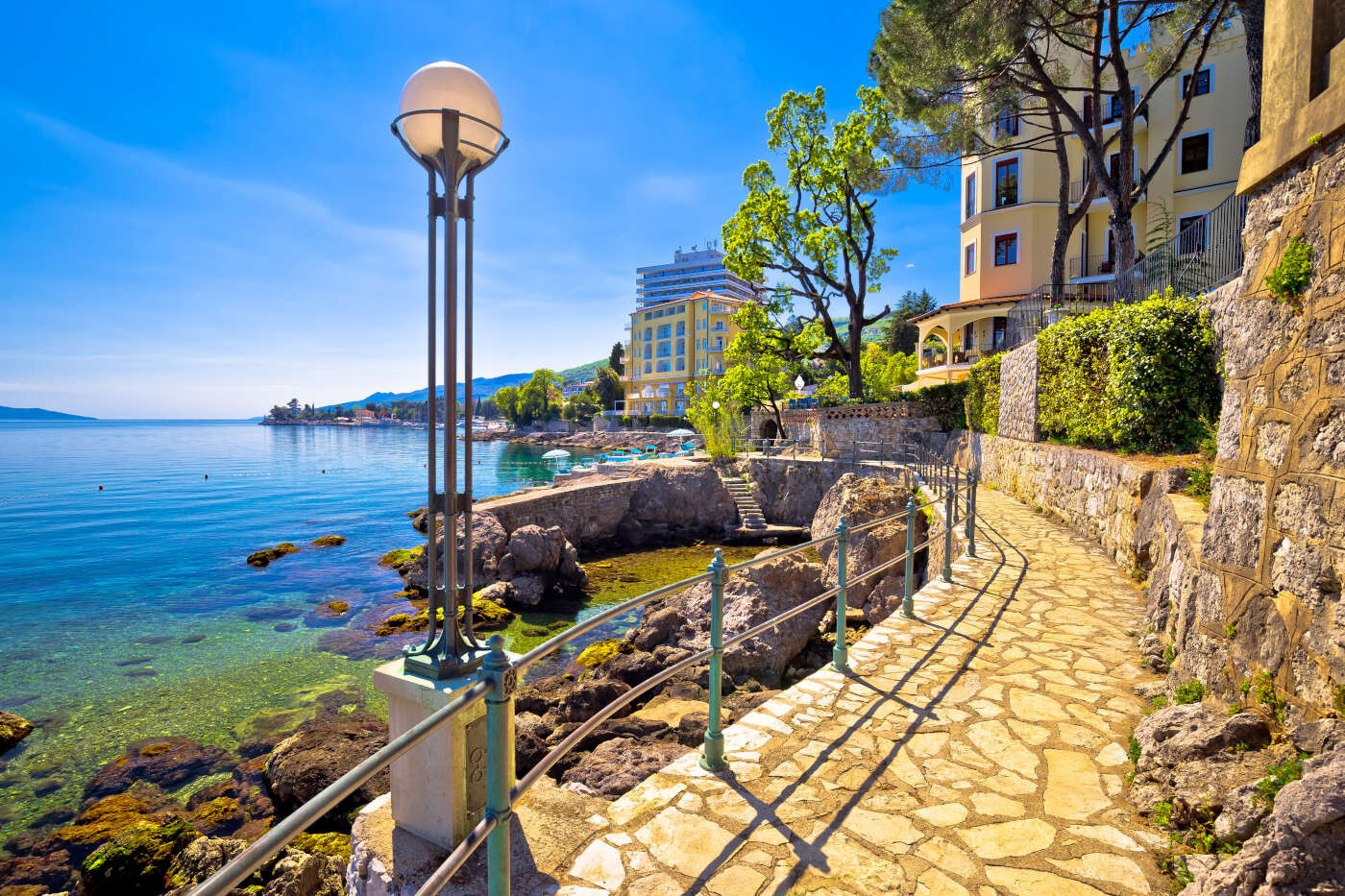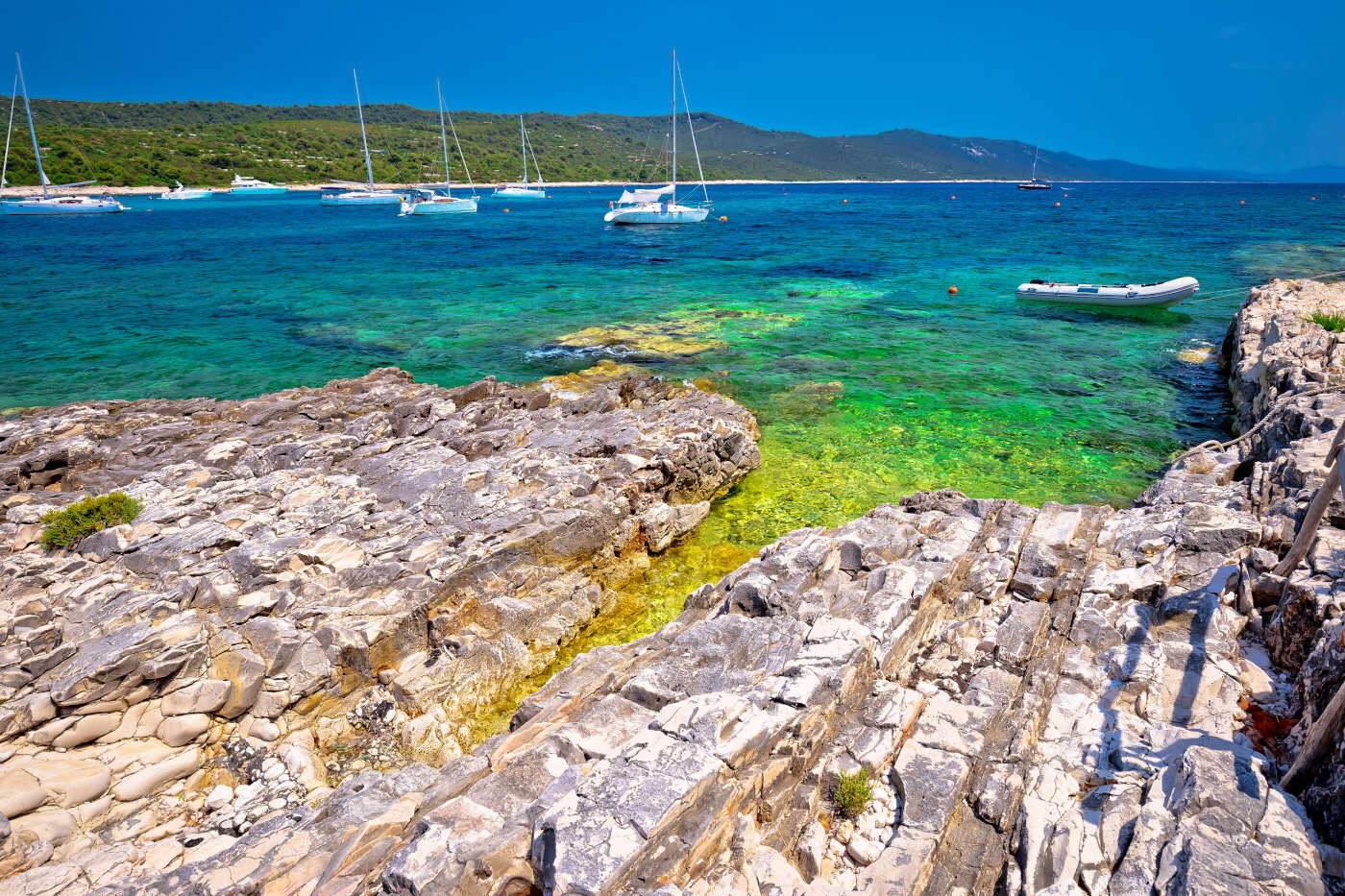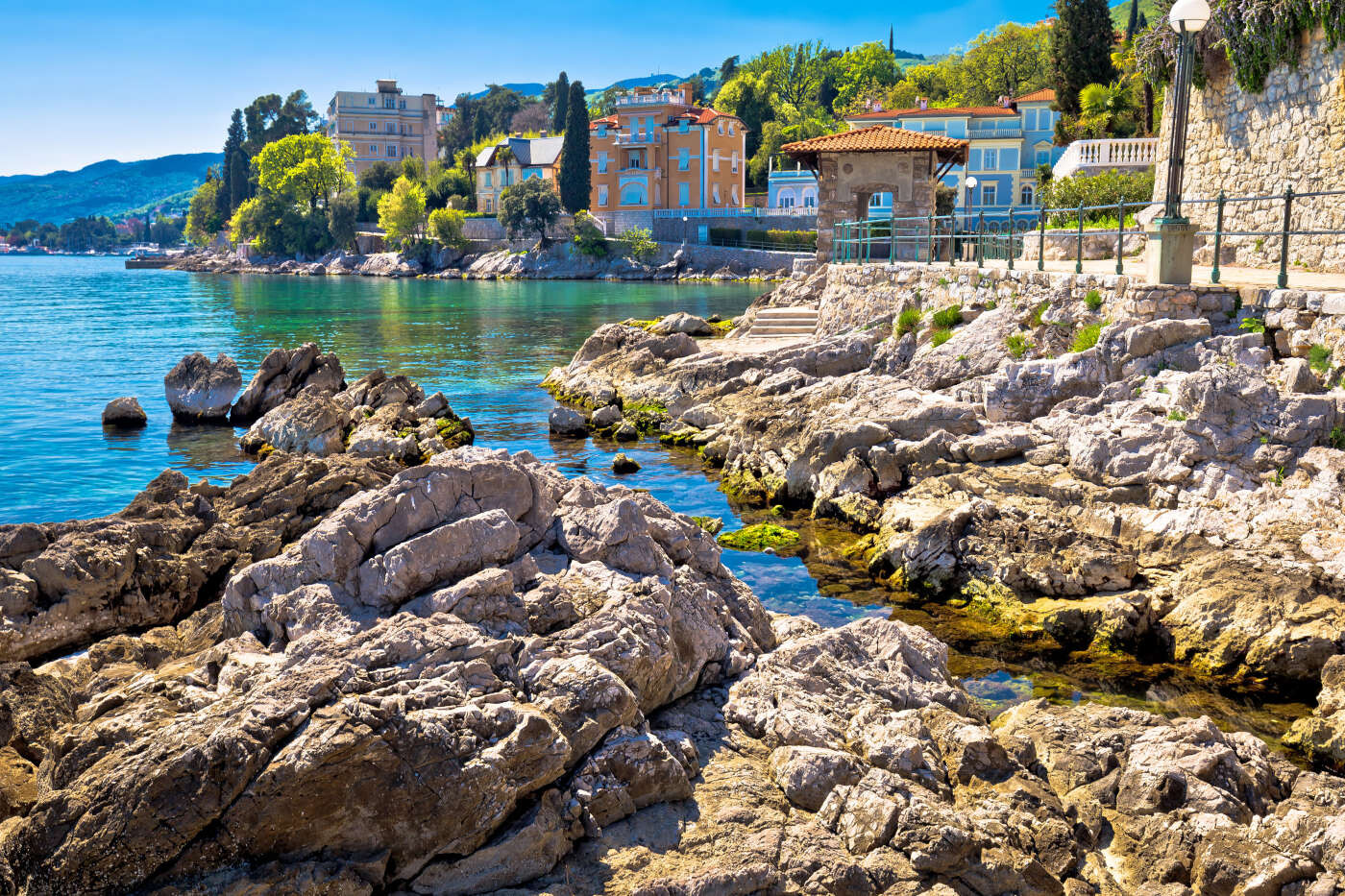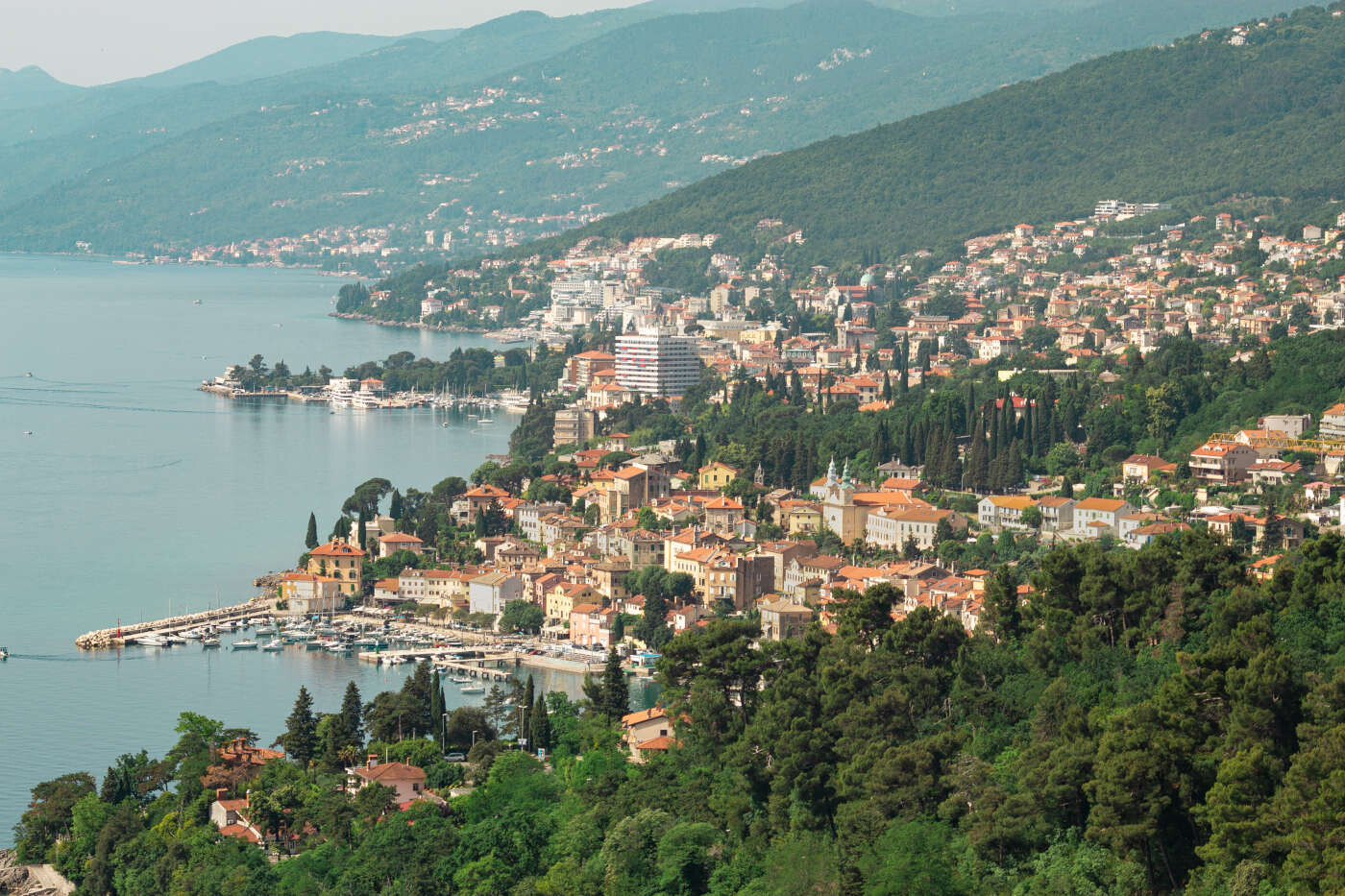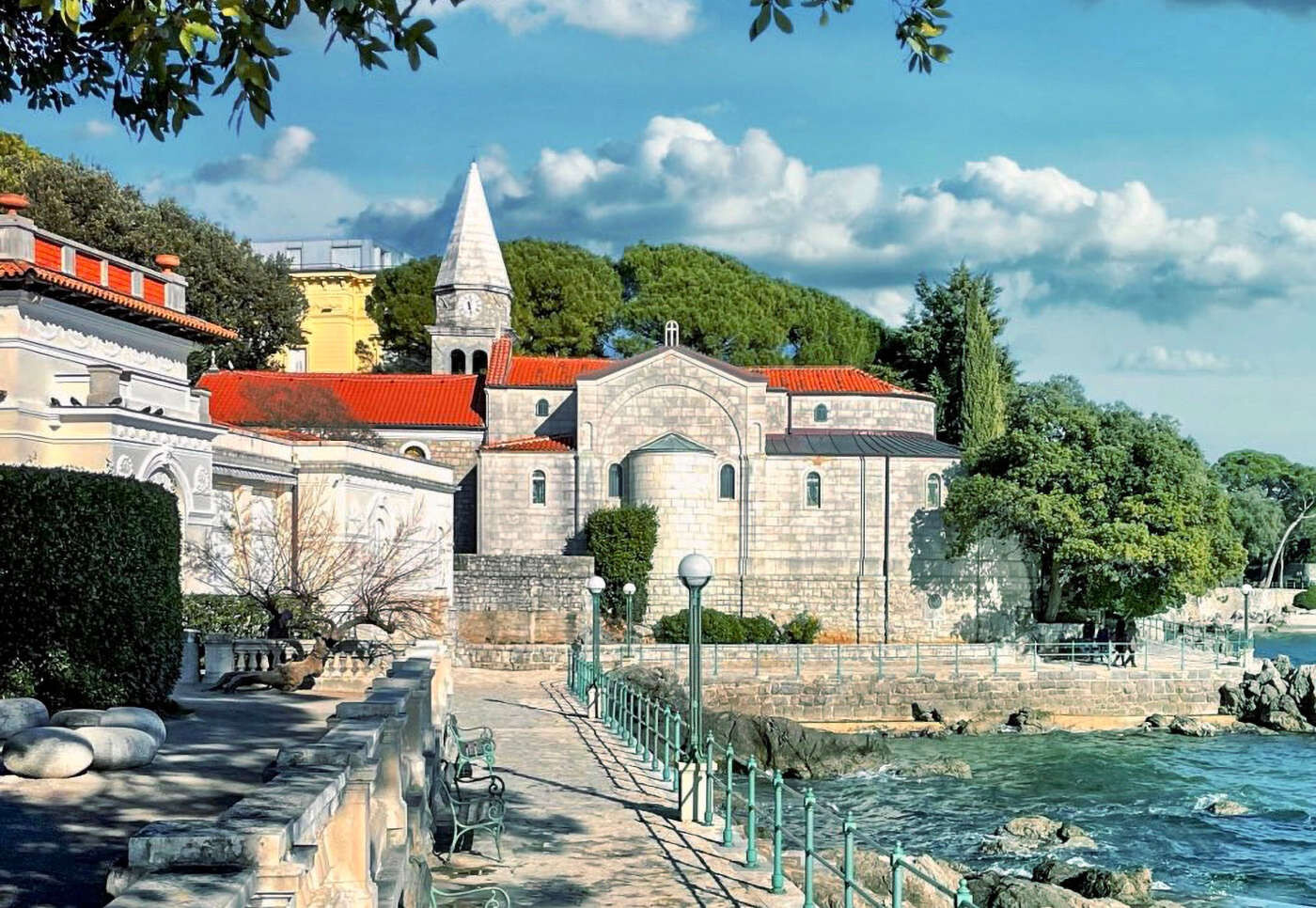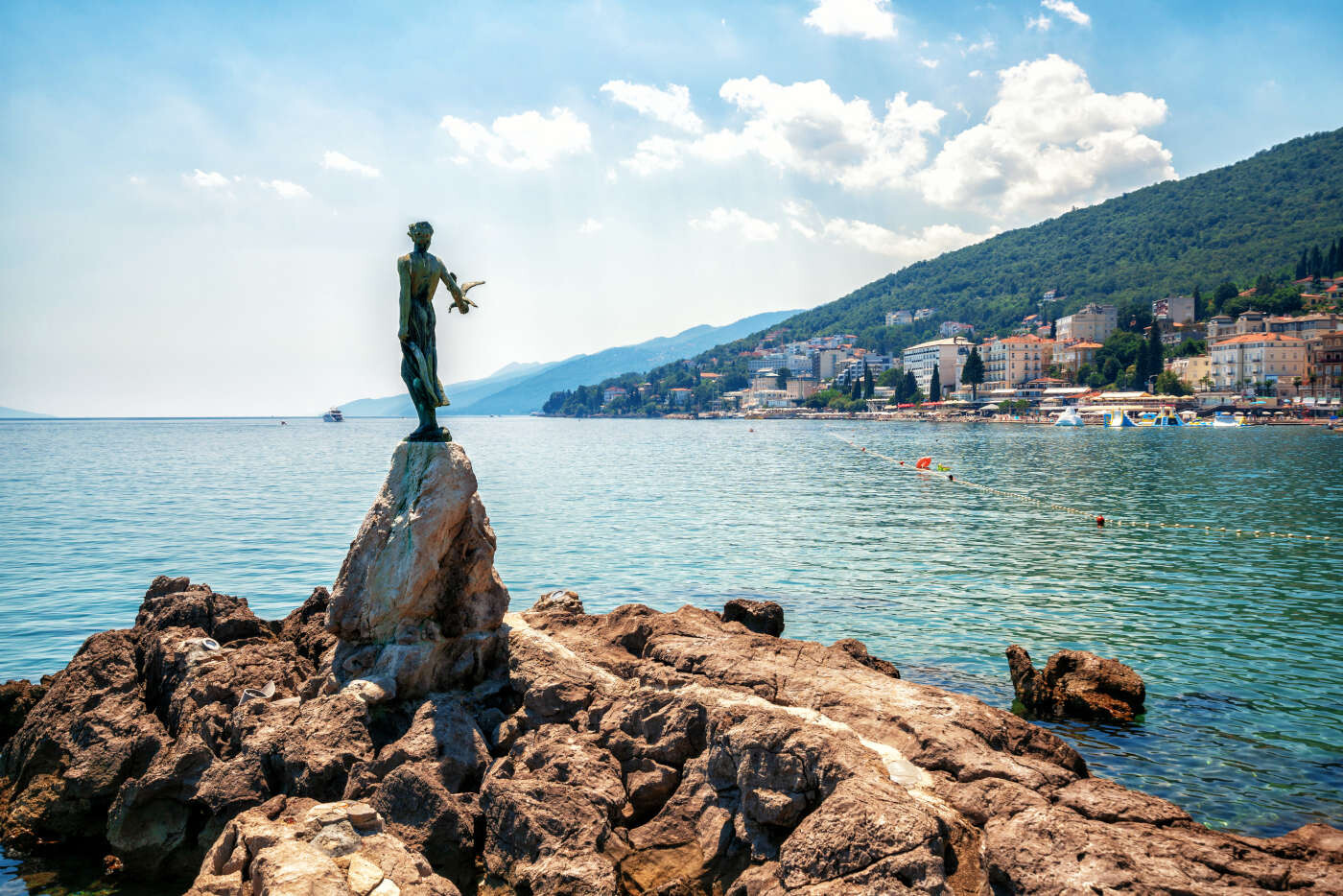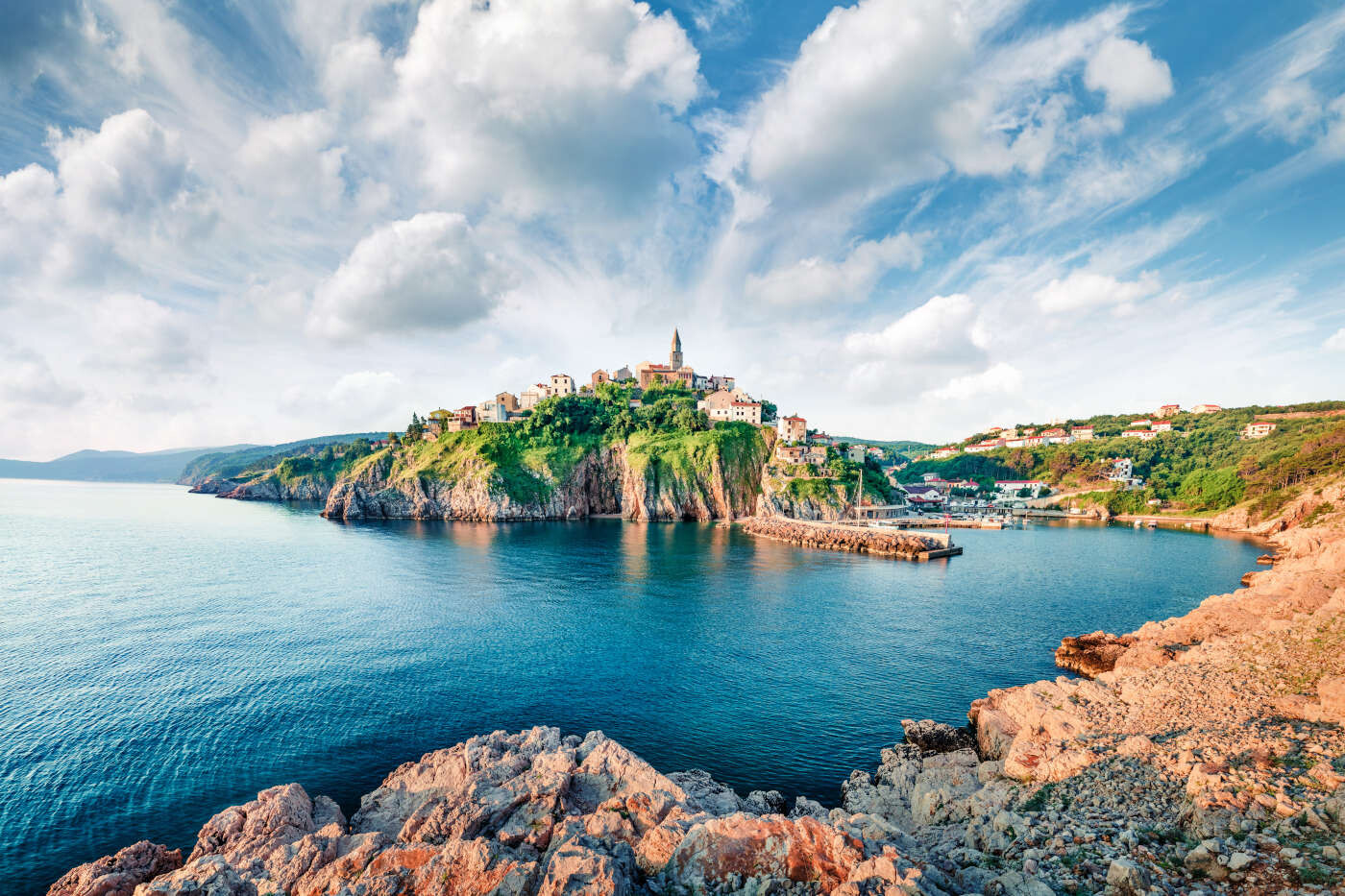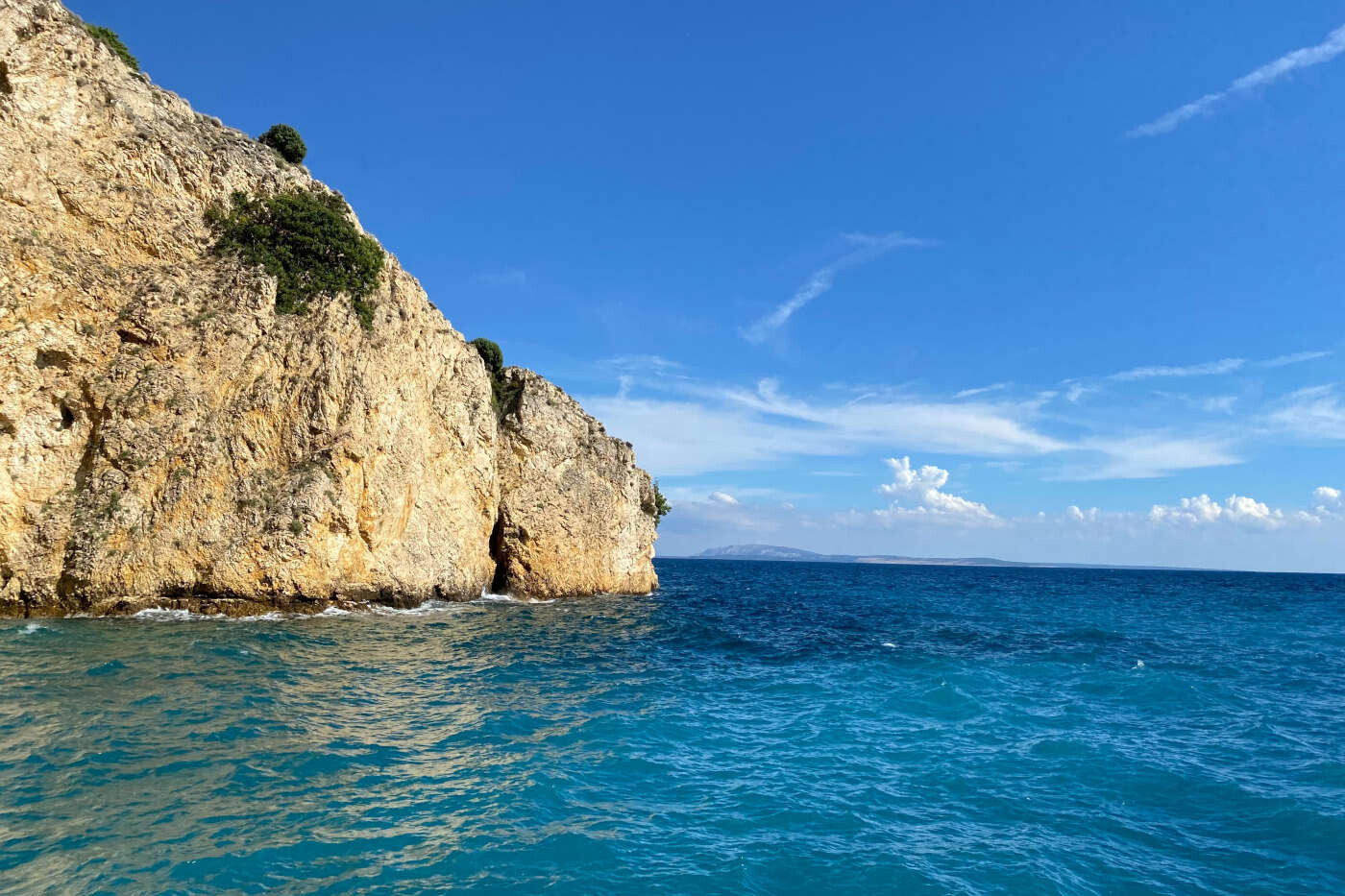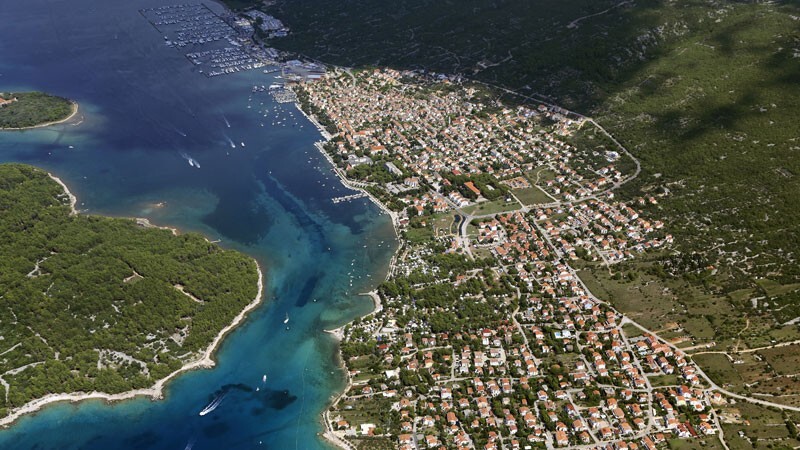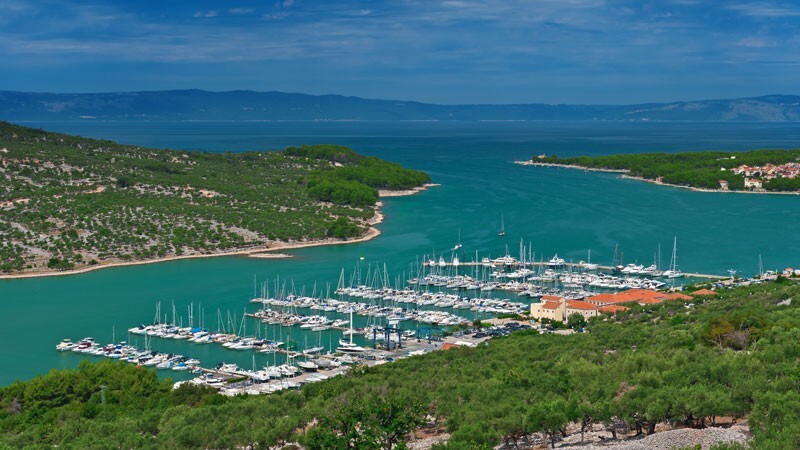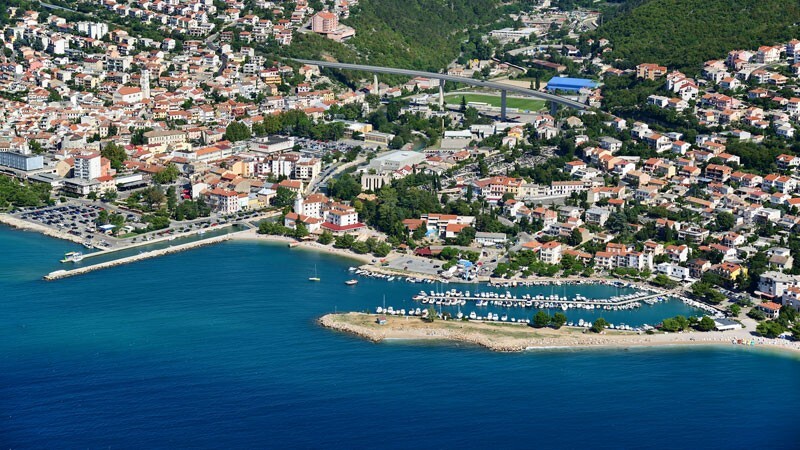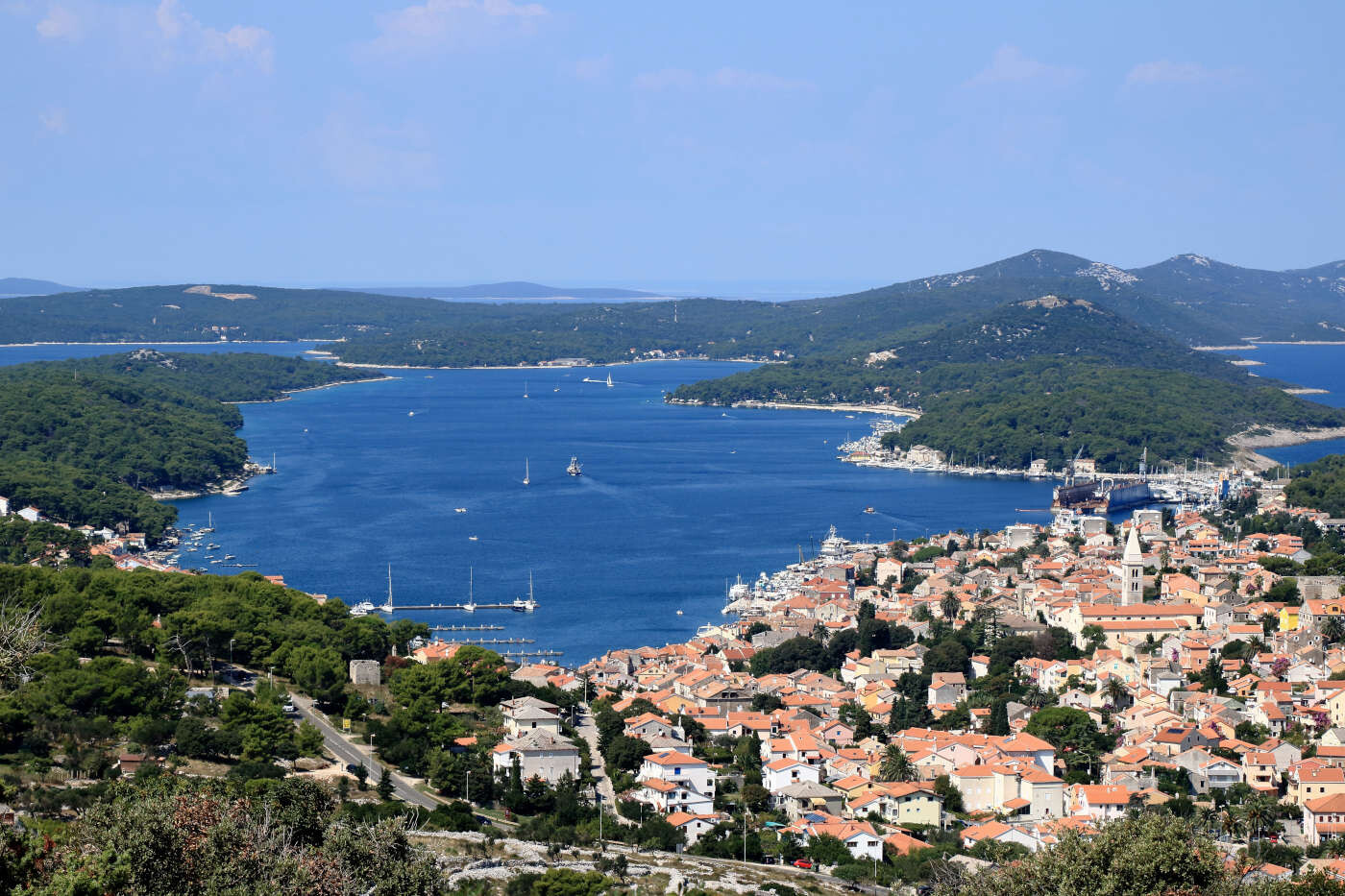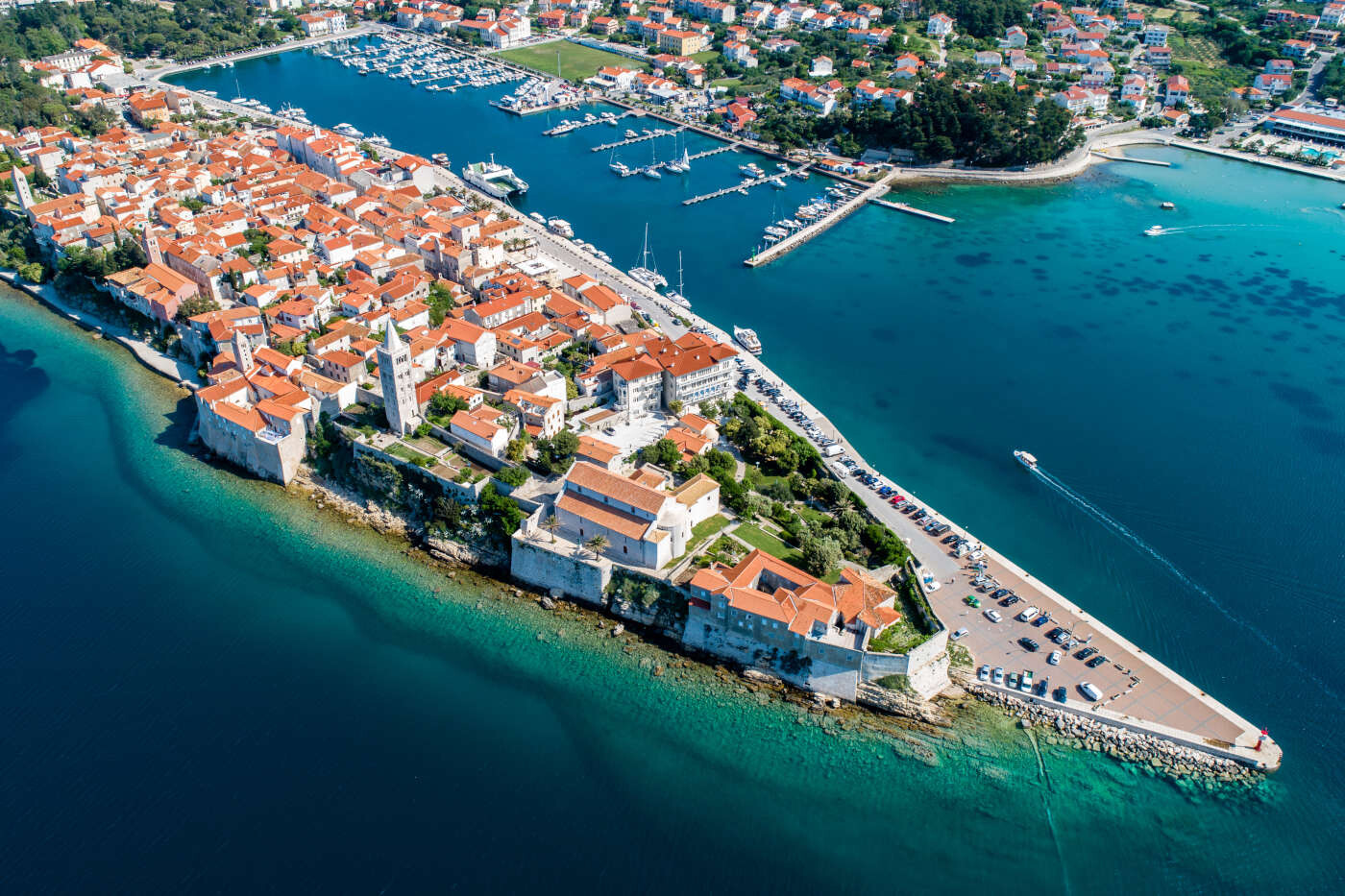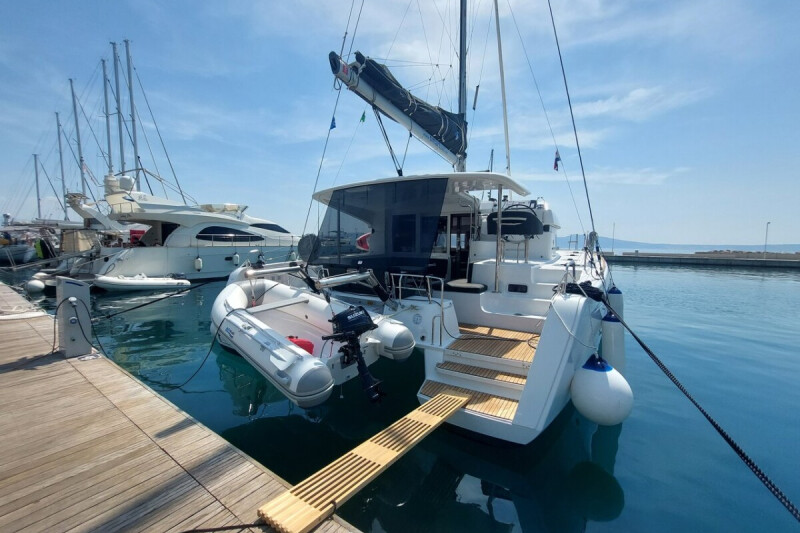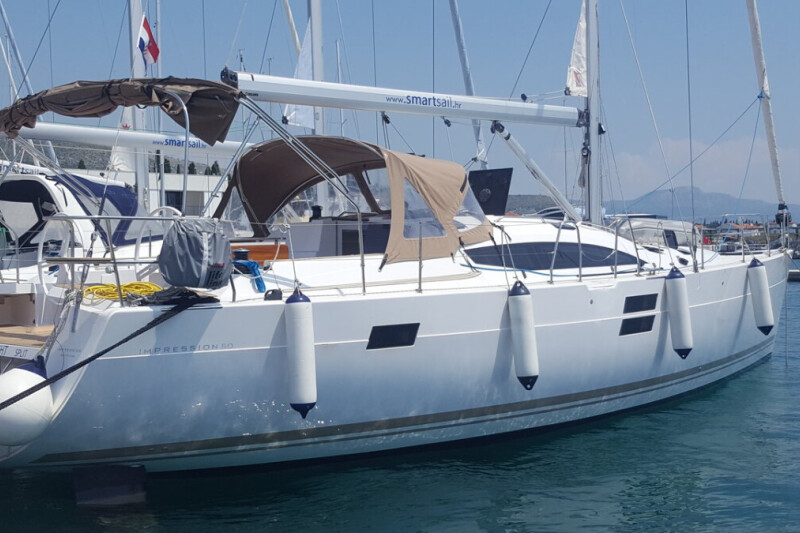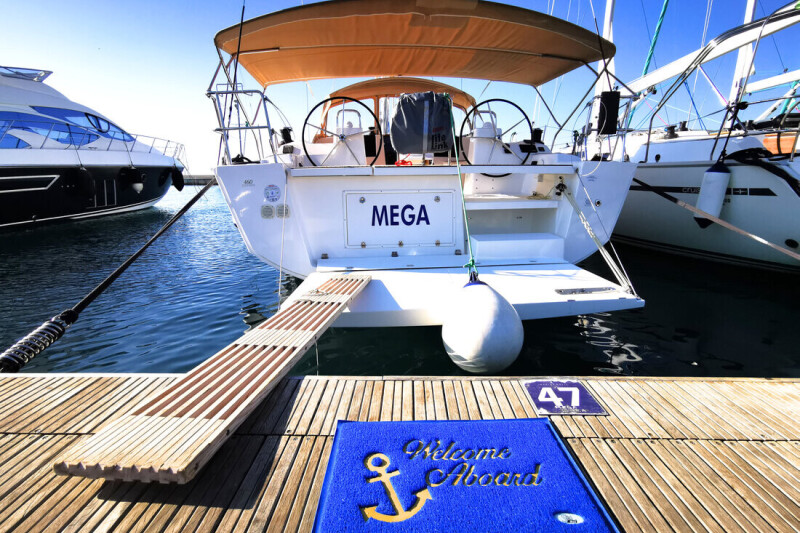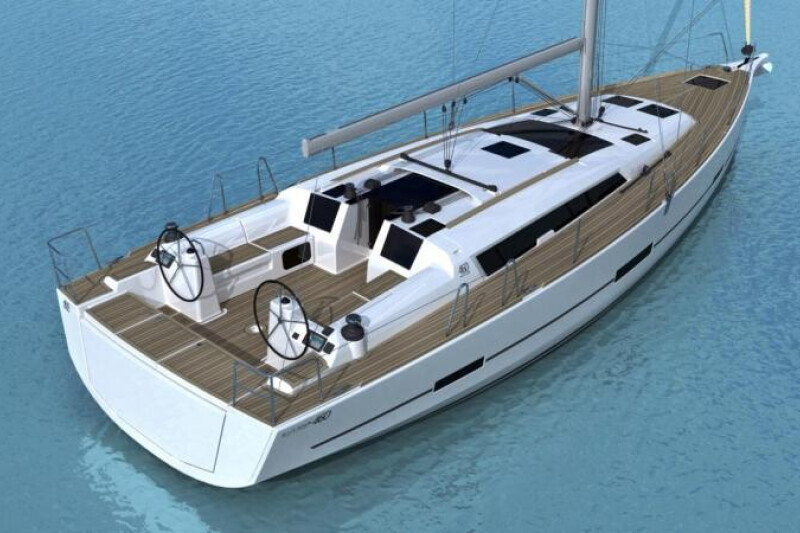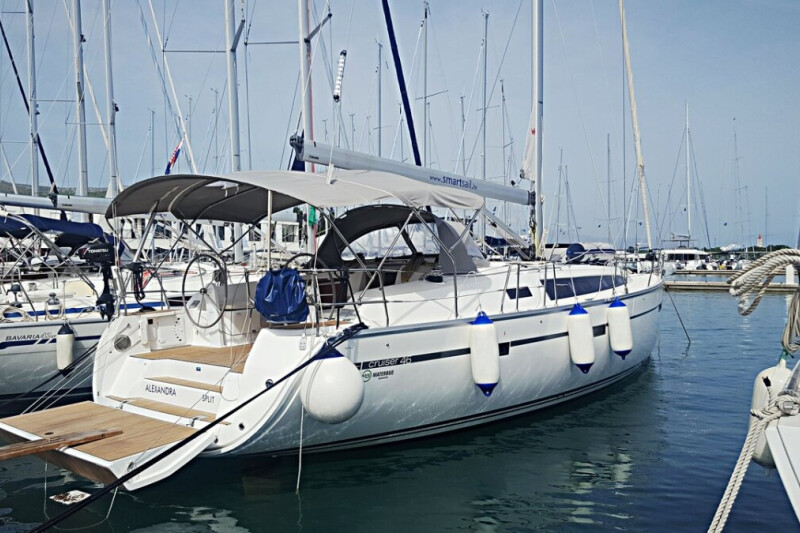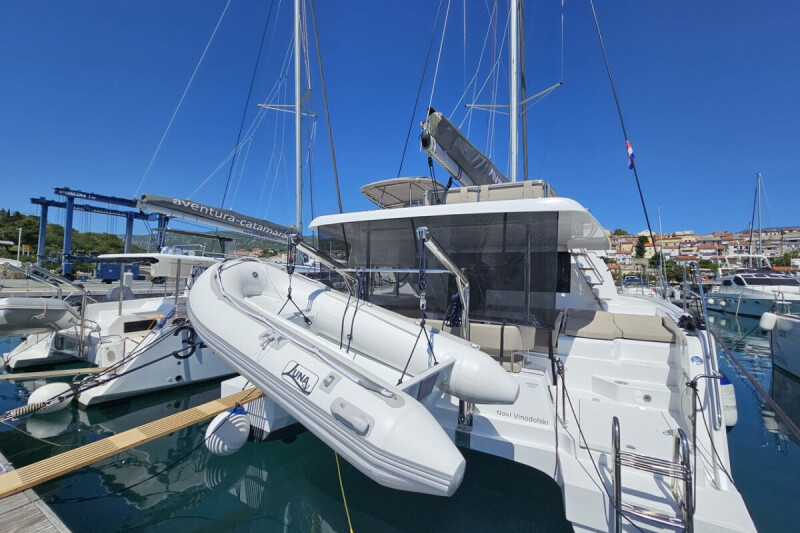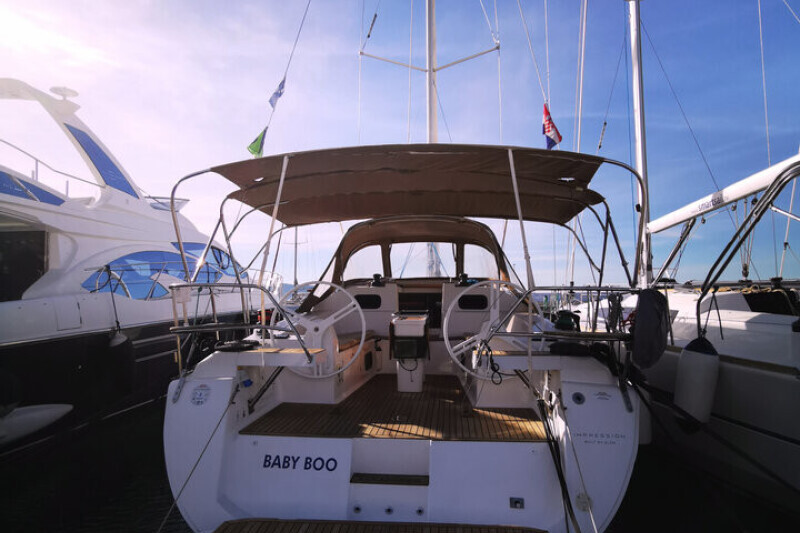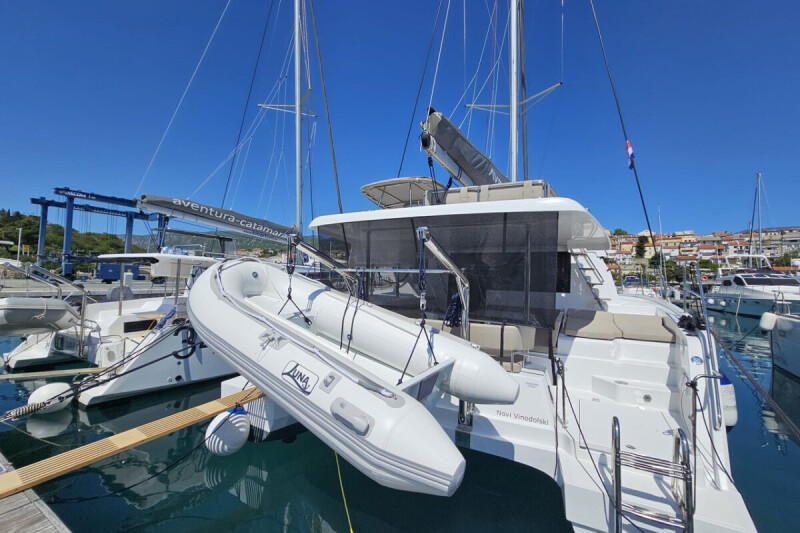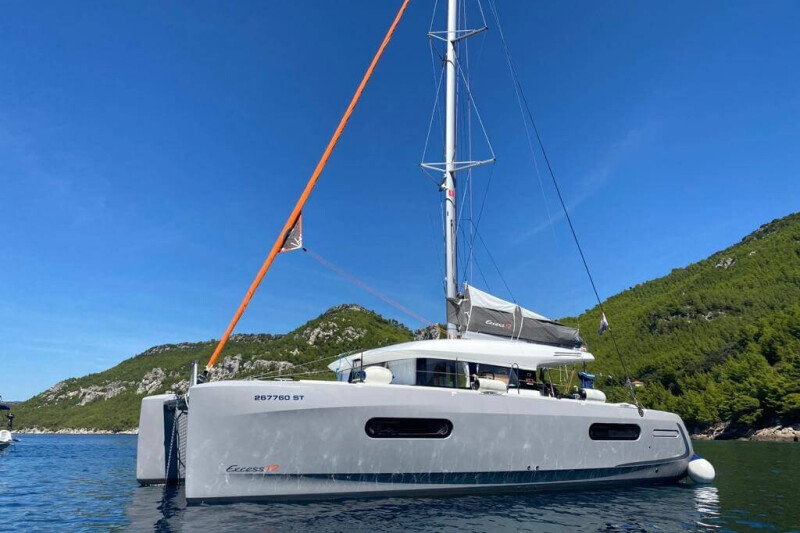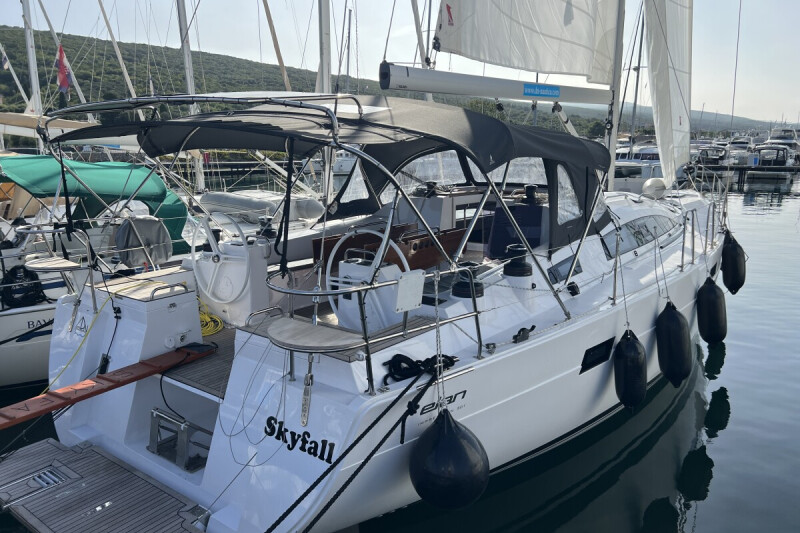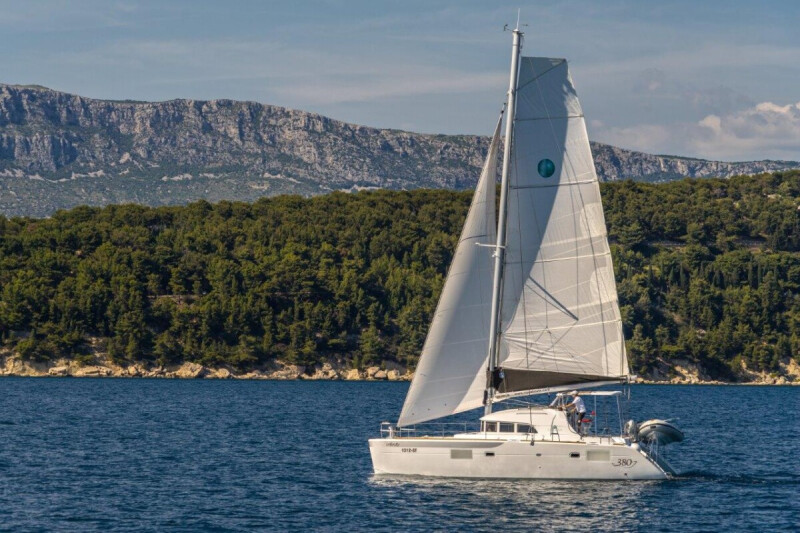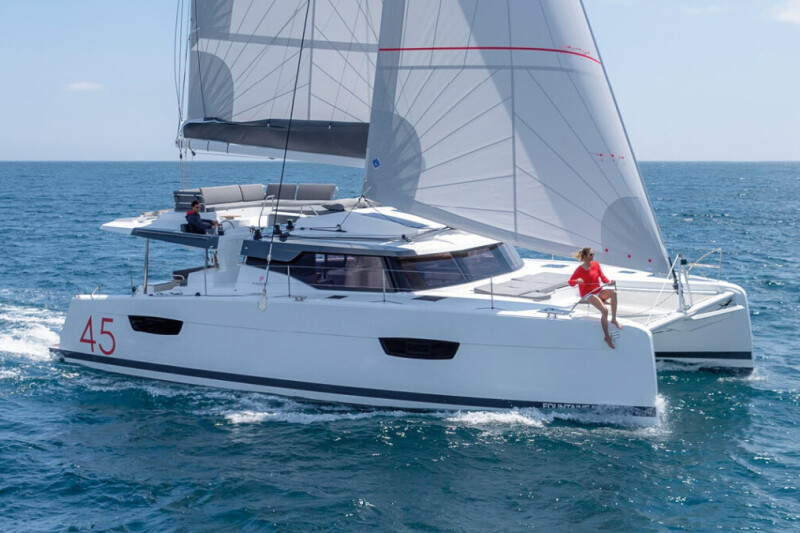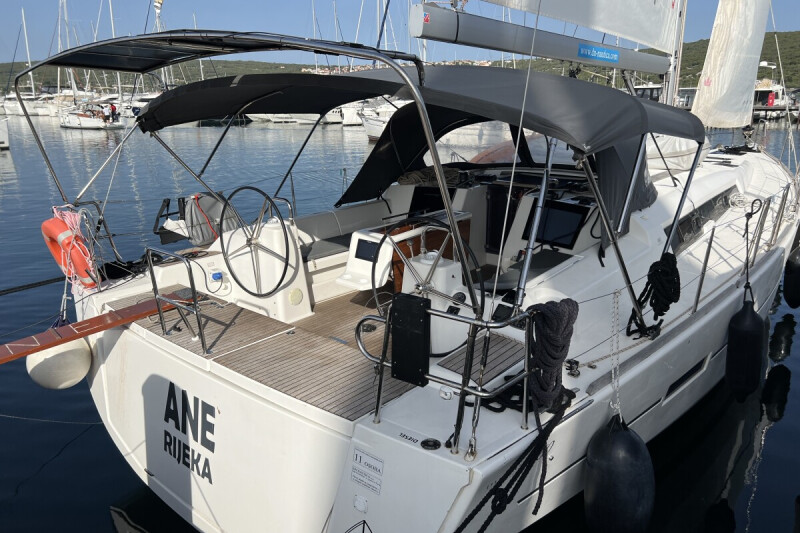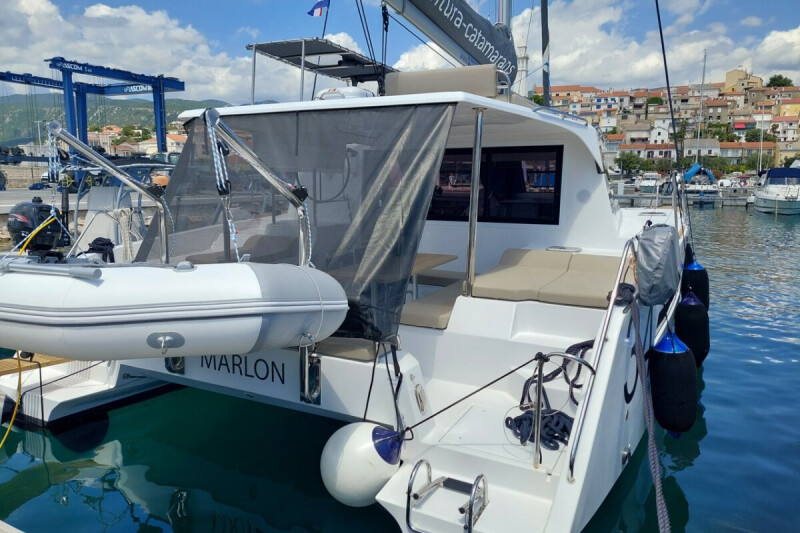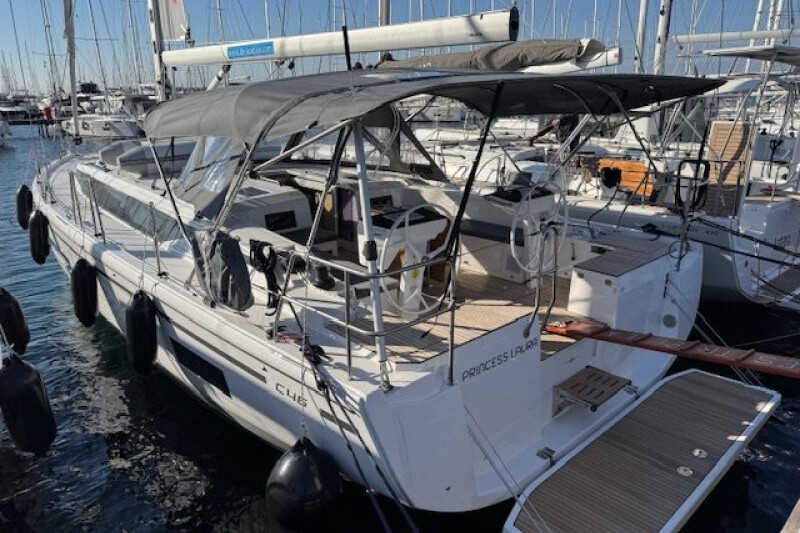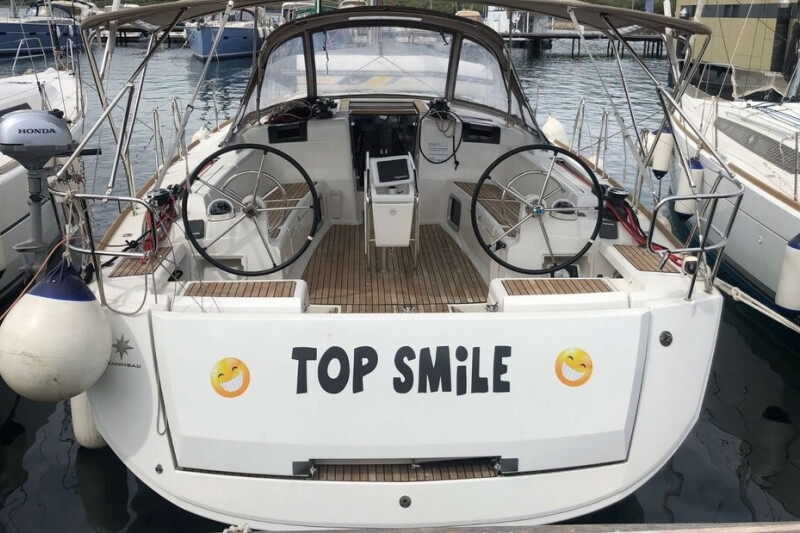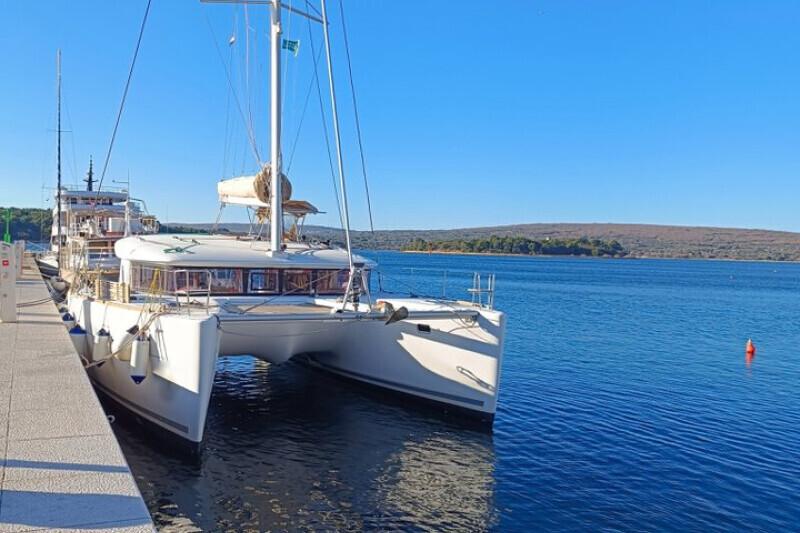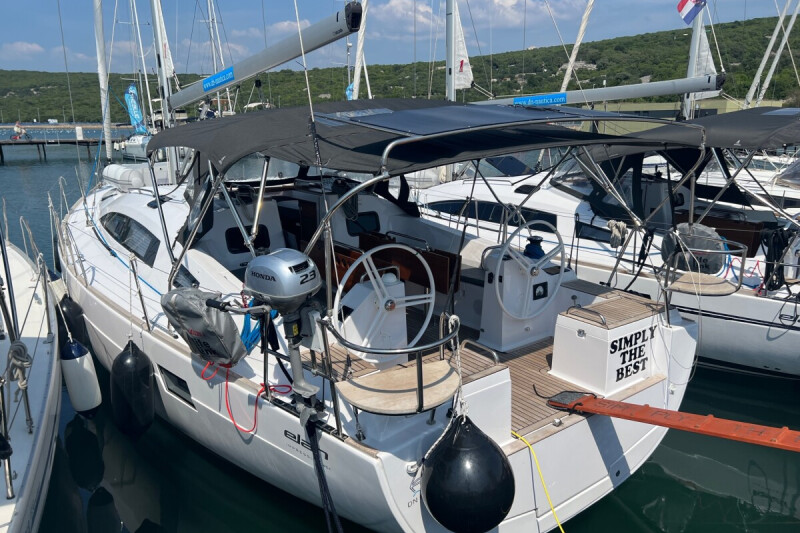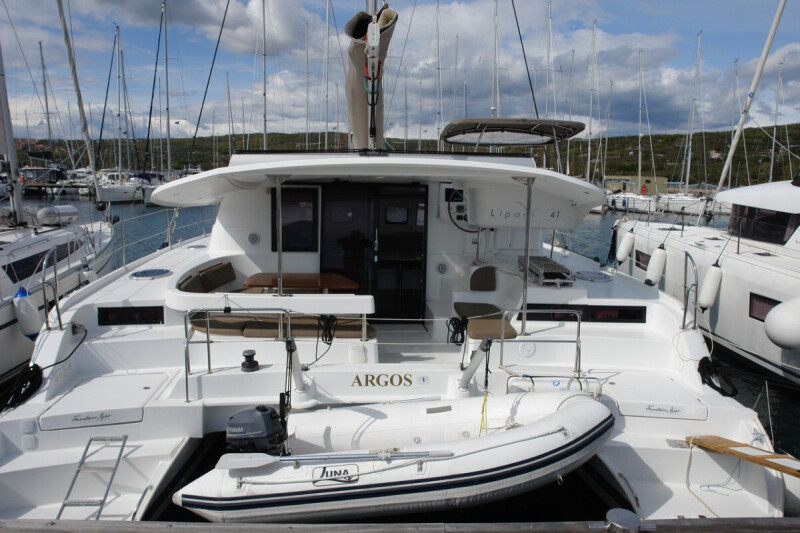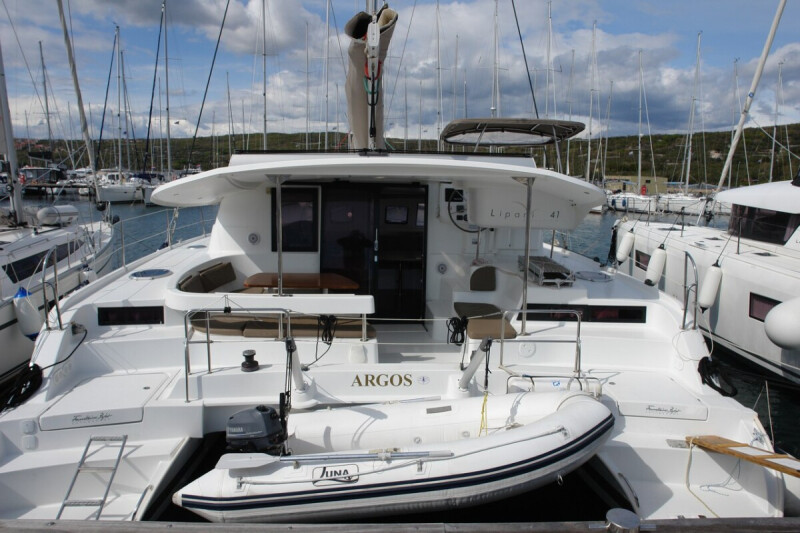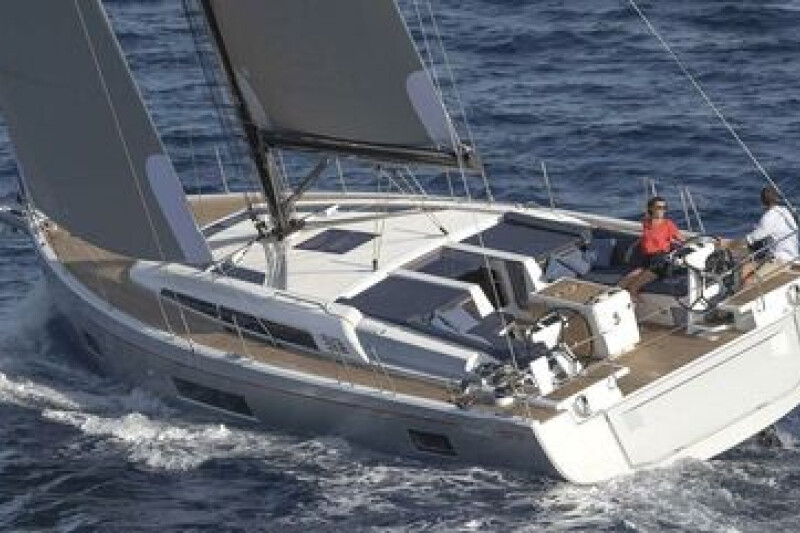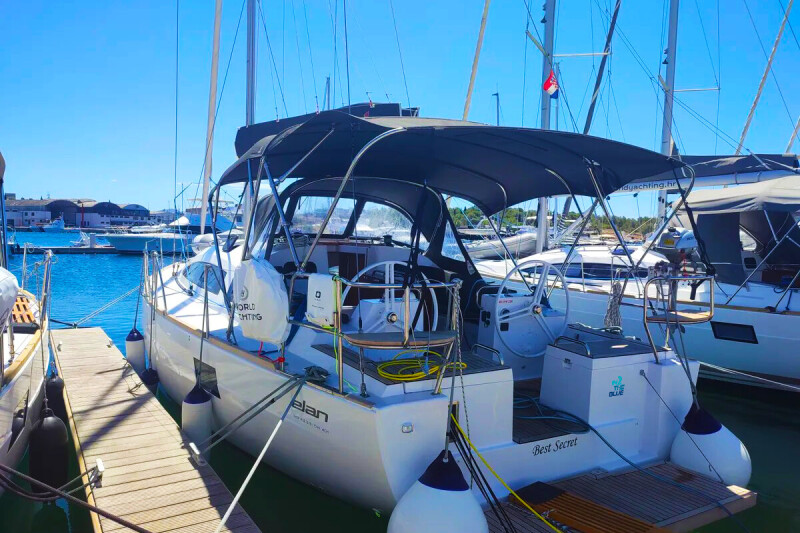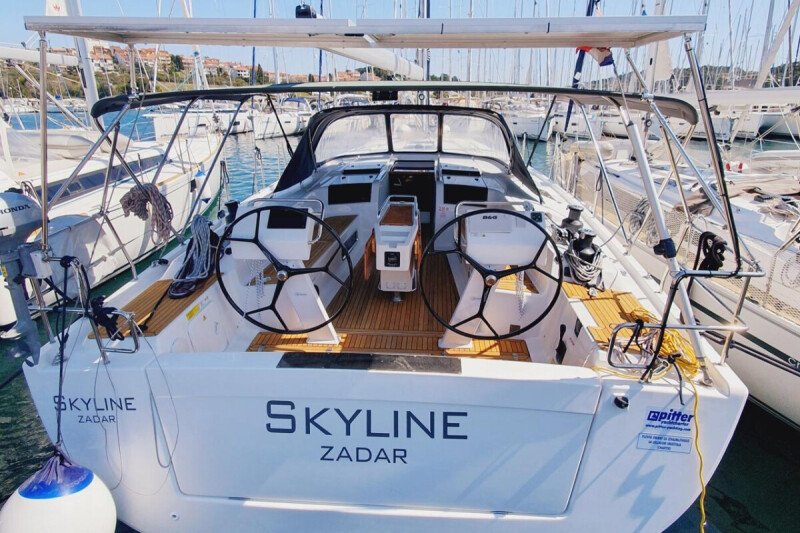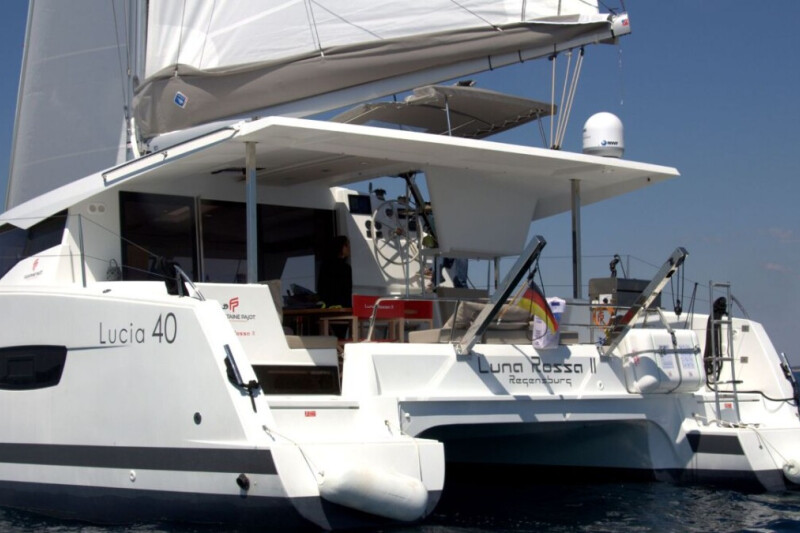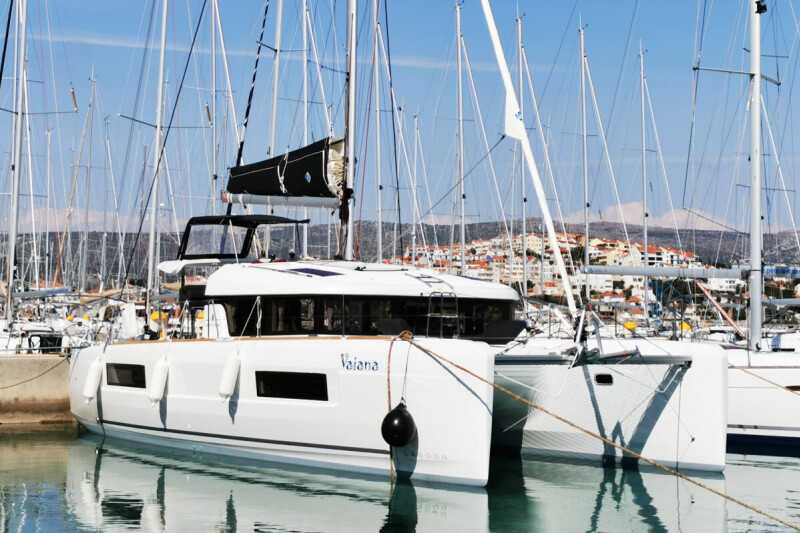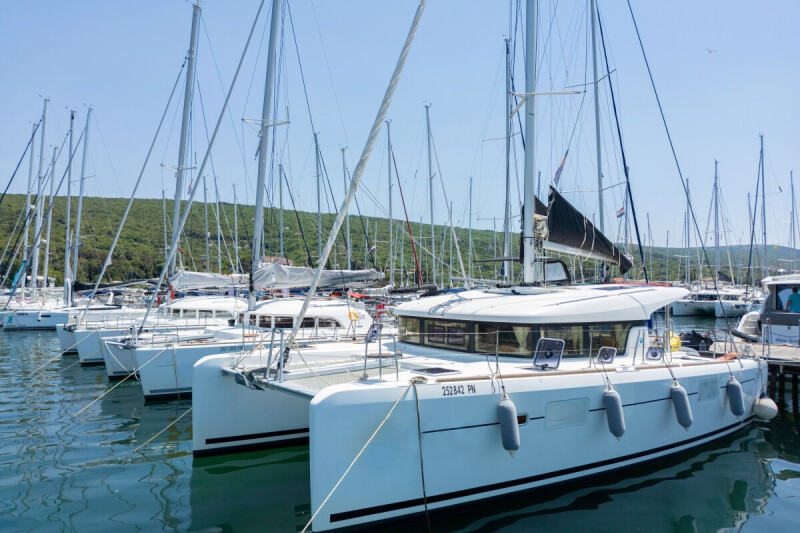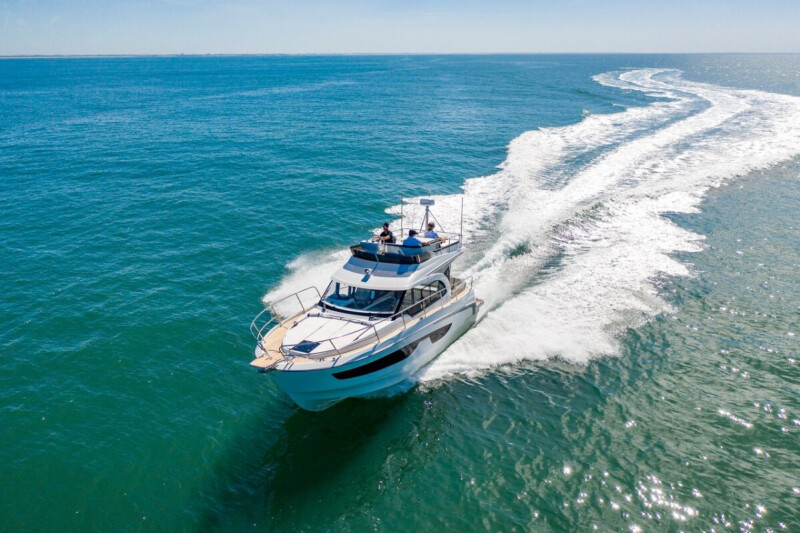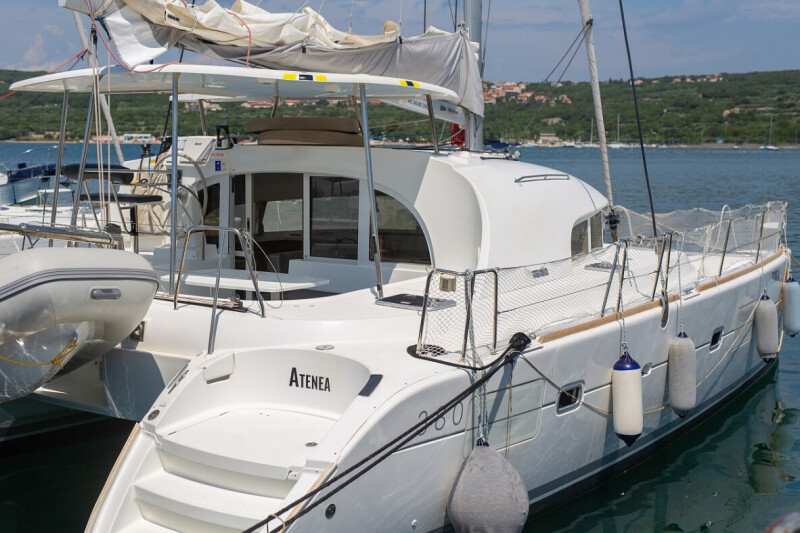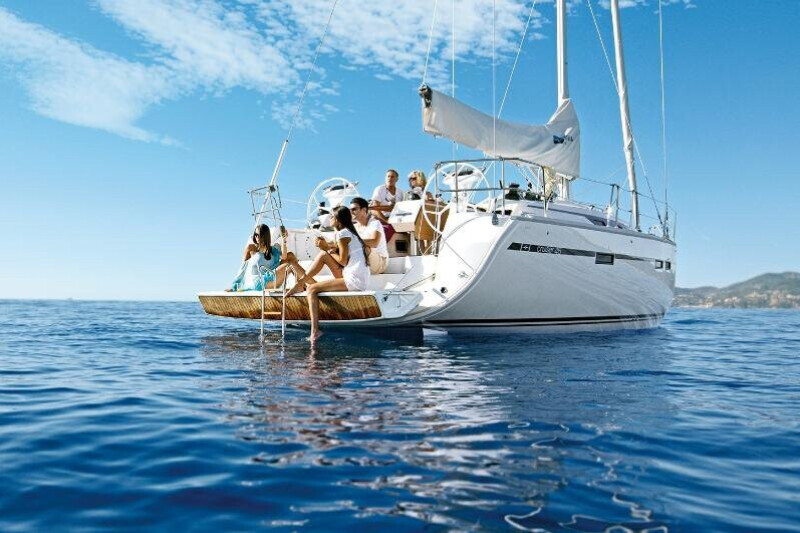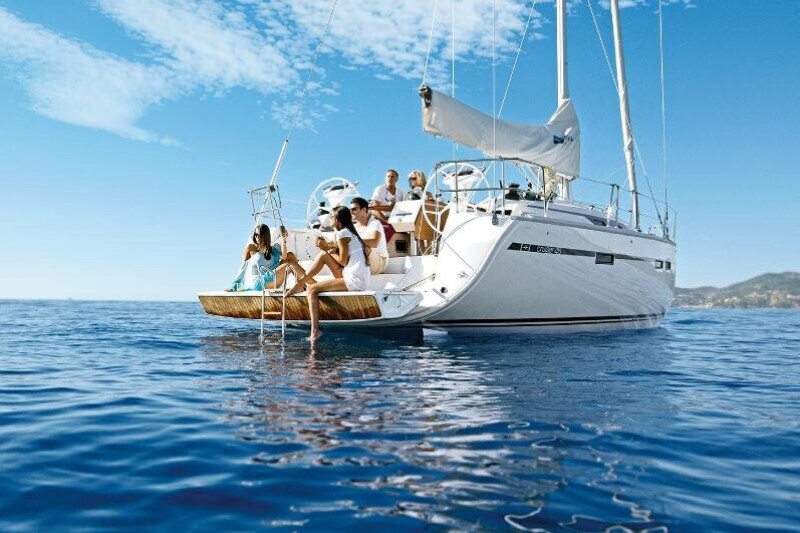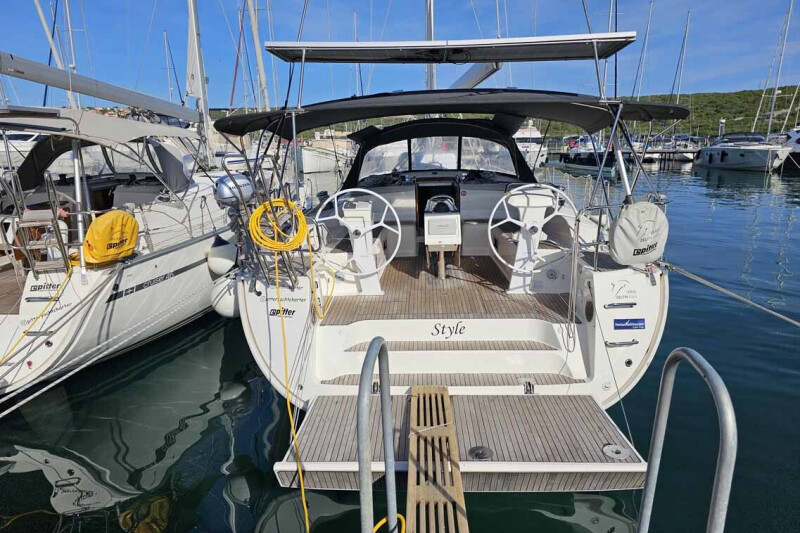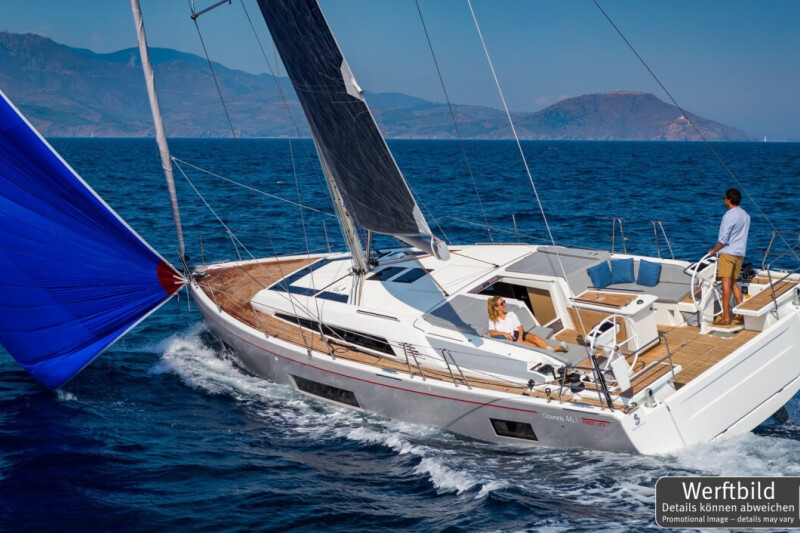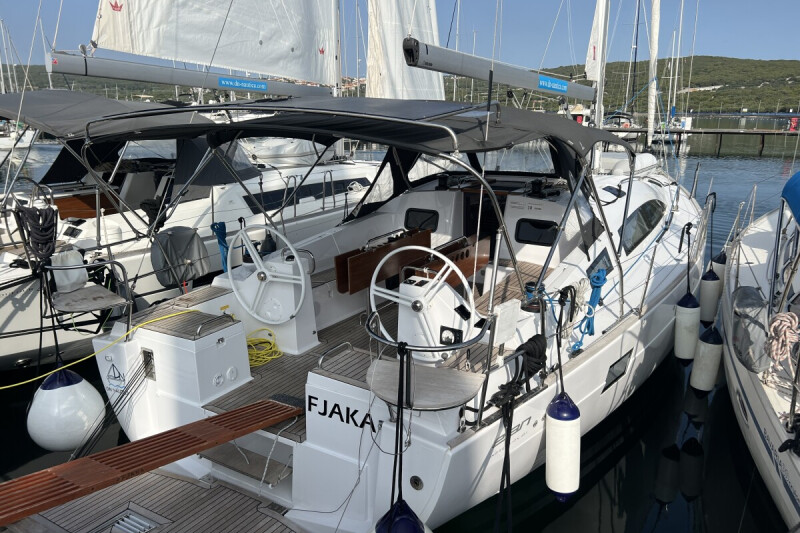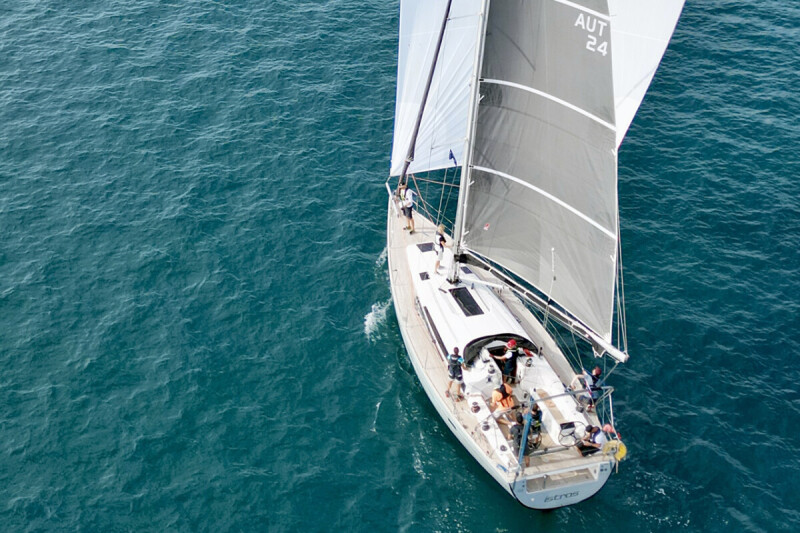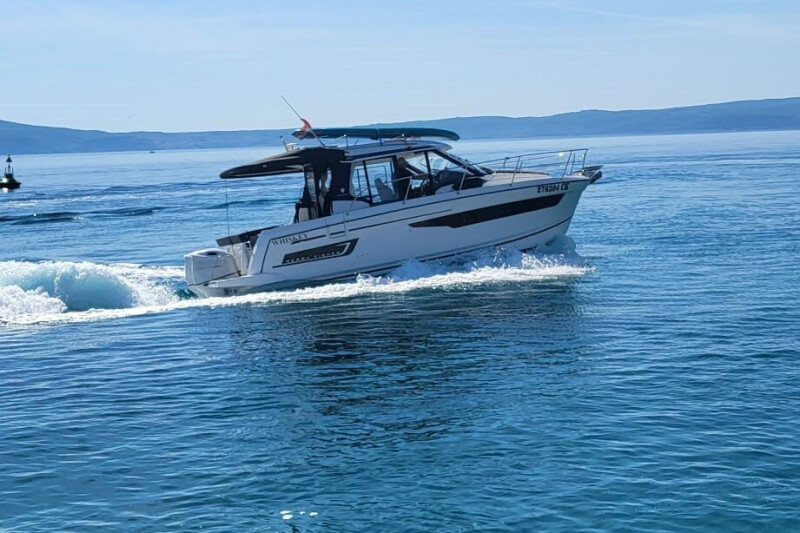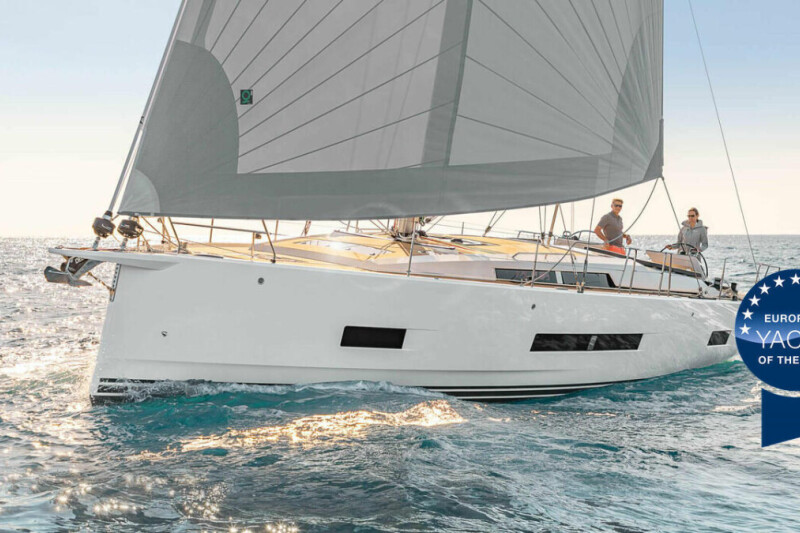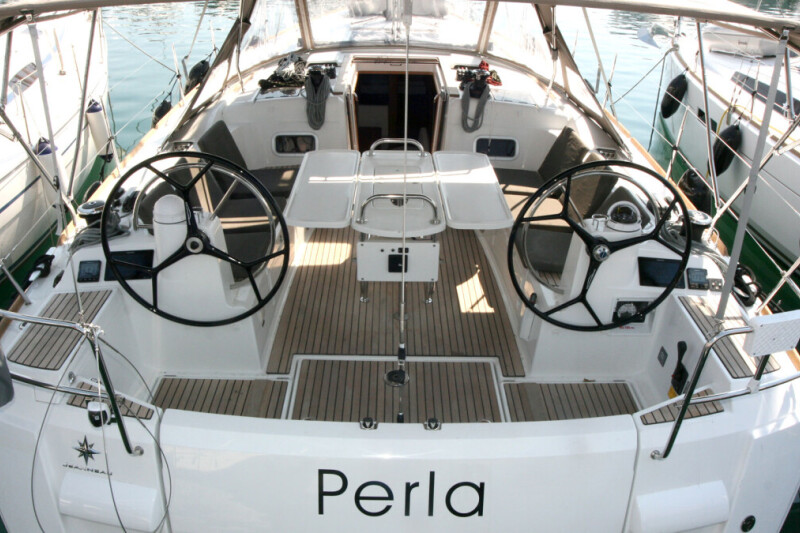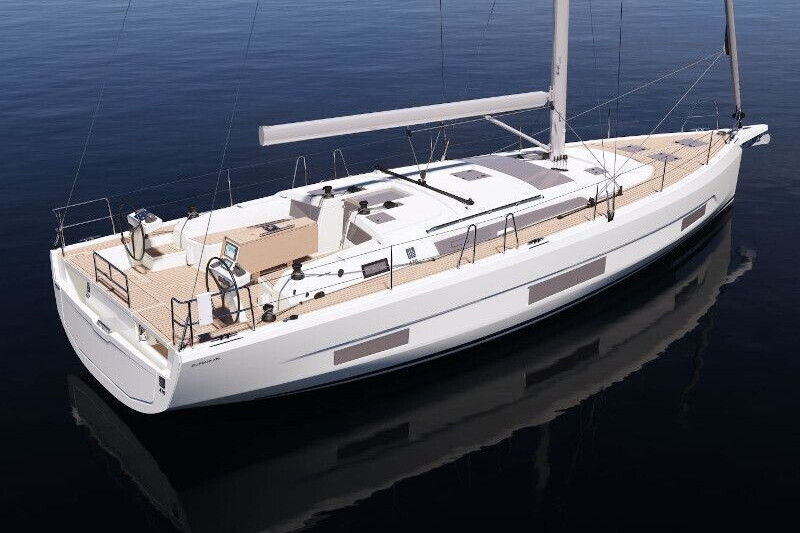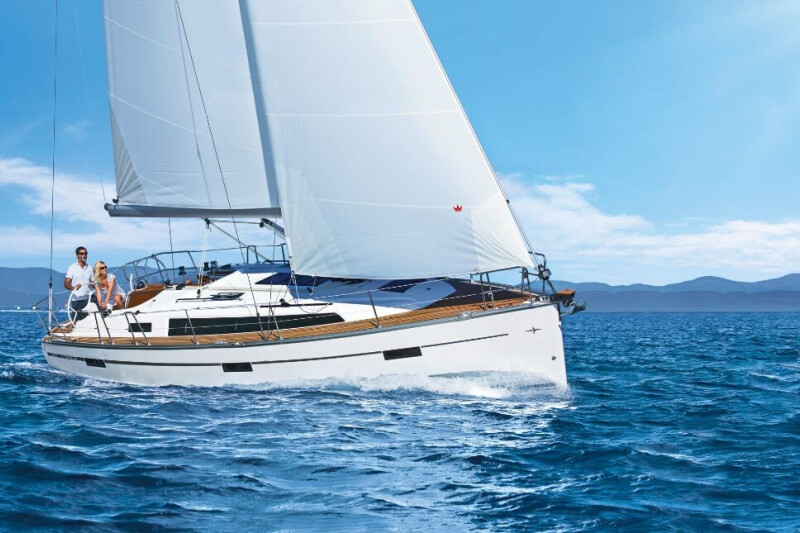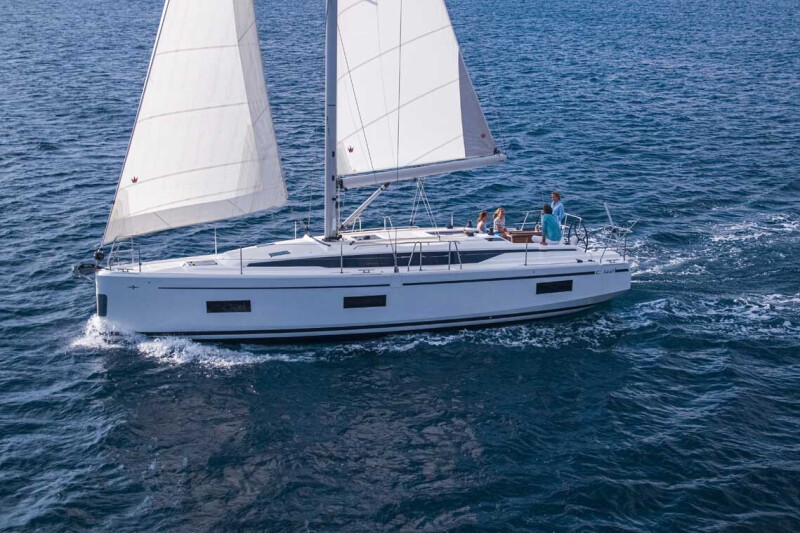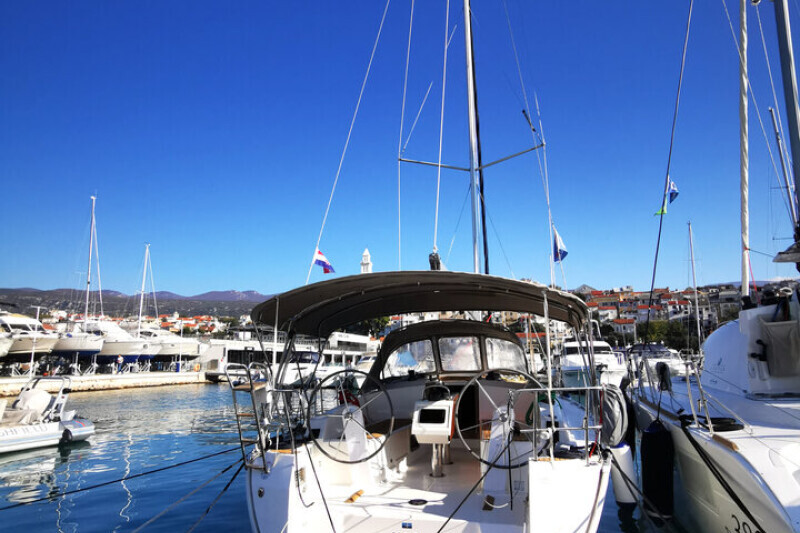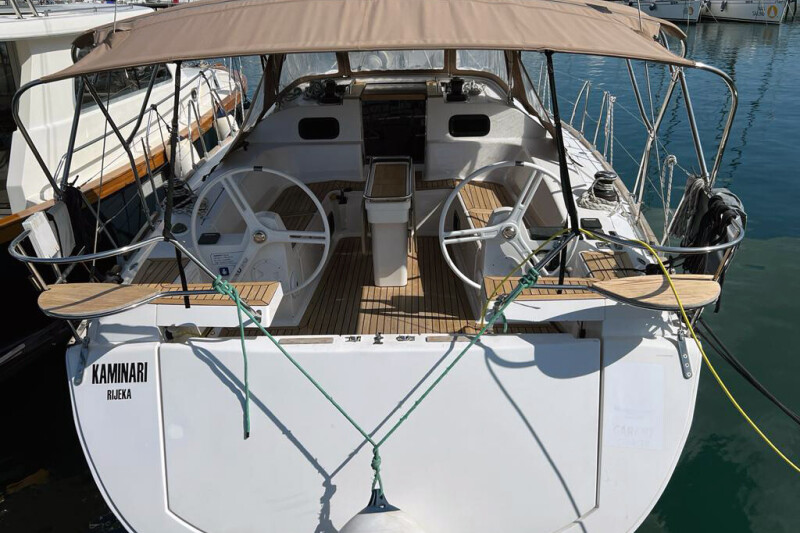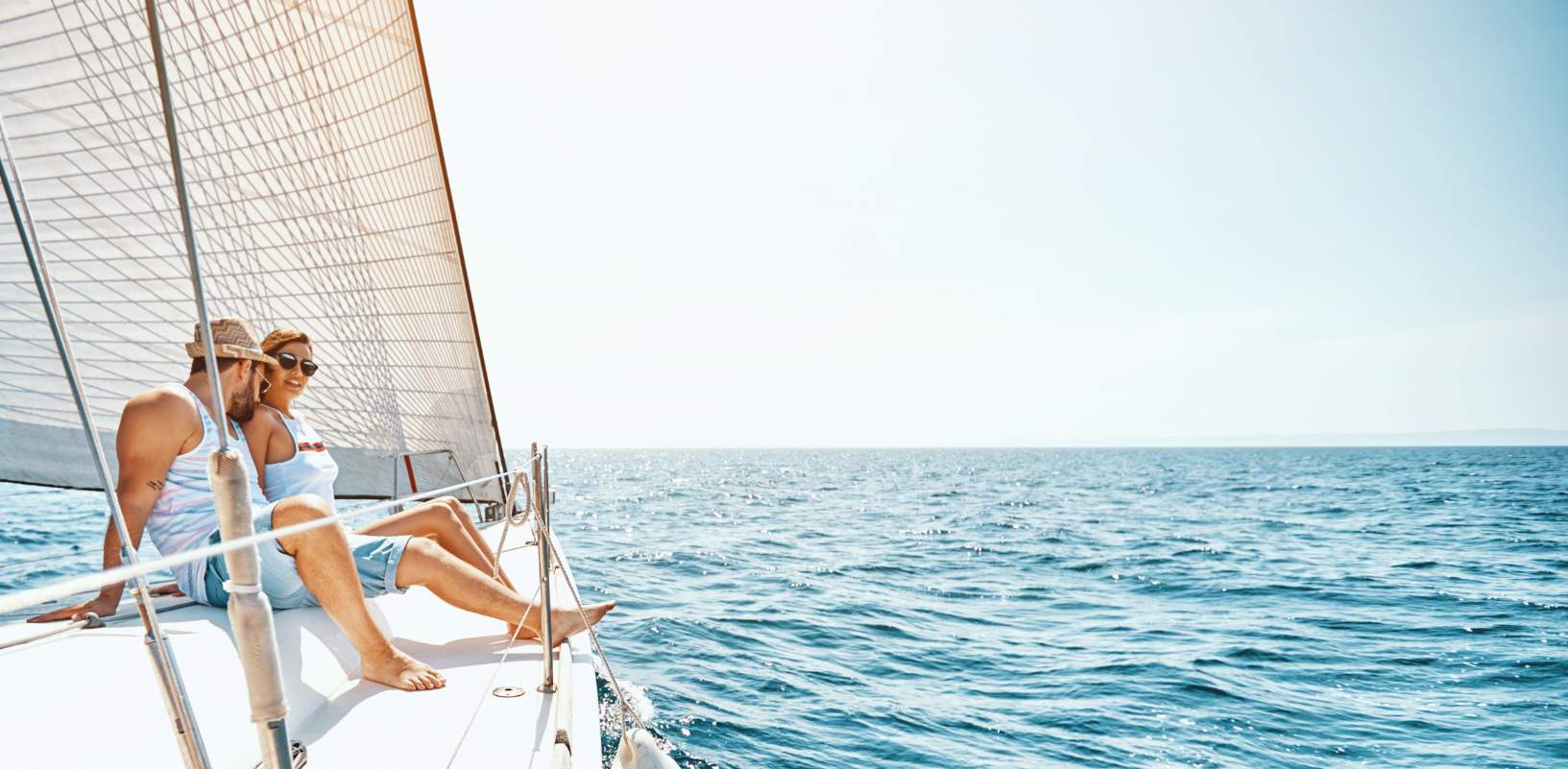Opatija is a town in Primorje-Gorski Kotar County in western Croatia. The traditional seaside resort on the Kvarner Gulf is known for its Mediterranean climate and its historic buildings reminiscent of the Austrian Riviera.
Opatija is located 18 km (11 mi) southwest of the regional capital Rijeka, about 90 km (56 mi) from Trieste by rail and 82 km (51 mi) from Pula by road. The city is geographically on the Istrian peninsula, though not in Istria County. The tourist resort is situated on the Kvarner Gulf, part of the Adriatic coast, in a sheltered position at the foot of Učka massif, with the Vojak peak reaching at a height of 1,401 m (4,596 ft). As of 2011, the town had 11,659 inhabitants in total, of which 6,657 lived in the urban settlement.
The town is a popular summer and winter resort, with average high temperatures of 10 °C in winter, and 32 °C in summer. Opatija is surrounded by beautiful woods of bay laurel. The entire sea-coast to the north and south of Opatija is rocky and picturesque and contains several smaller winter resorts.
The old 14th century Benedictine abbey, Opatija Sv. Jakova ("Abbey of Saint Jacob"), from which the town derives its name ("opatija" means "abbey" in Croatian) is located in Park Svetog Jakova or Saint James's Park. Saint Jacob's church, built in 1506 and enlarged in 1937, now stands on the same spot. The neo-Romanesque Church of the Annunciation with its pronounced green cupola was designed in 1906 by the architect Karl Seidl.
Another sight is the Villa Angiolina, built in 1844 by Iginio Scarpa. This villa was transformed into a museum. Since 1844. Villa Angiolina had many prominent guests.
Opatija is known for the Maiden with the Seagull, a statue by Zvonko Car (1956), which is positioned on a promontory by the Juraj Šporer art pavilion. It has turned into one of the symbols of Opatija. A gilded variant of the statue Madonna, which once stood here, but was demolished by communists after the end of World War II, now stands in front of Saint Jacob's Church.
The town park Angiolina contains many species of plants from all over the world. It has been protected since 1968. Close-by, vis-a-vis Hotel Imperial, stands the statue The Fountain – Helios and Selena, a work of the Austrian sculptor Hans Rathautsky from 1889. There is a 12 km-long promenade along the entire riviera, the Lungomare from Volosko, via Opatija, to Lovran and a 7 km-long forest path walk, the Šetalište Carmen Sylve, named after Elisabeth of Wied, Queen consort of Romania, widely known by her literary name of Carmen Sylva.
